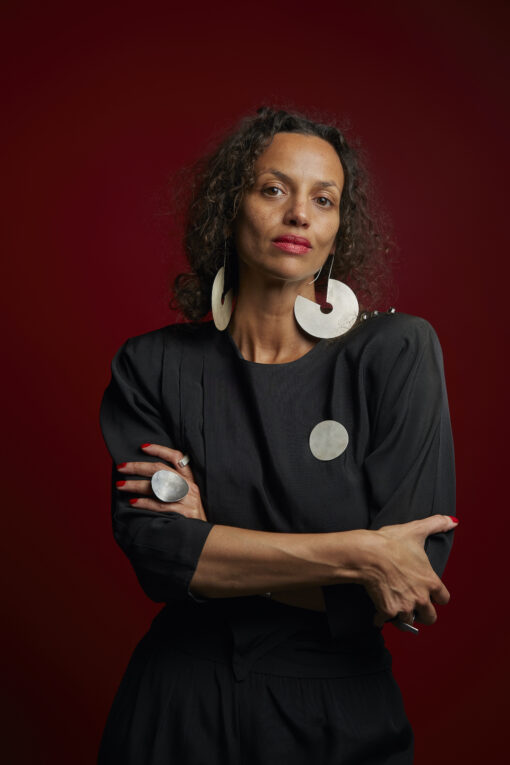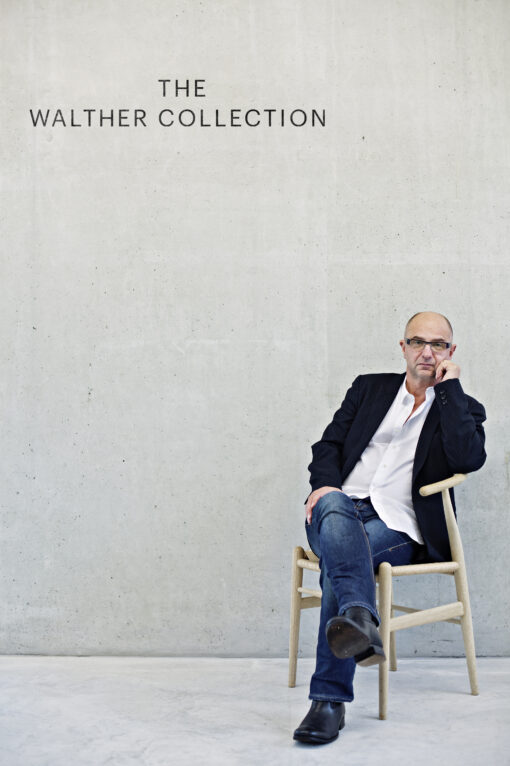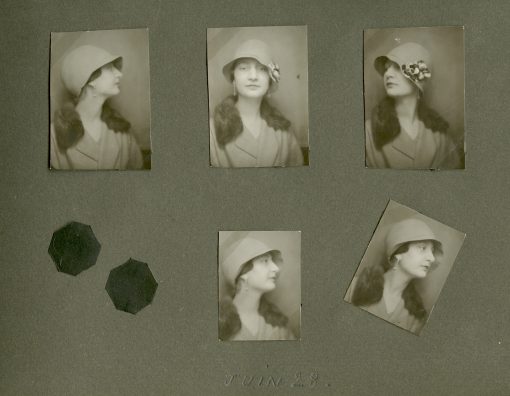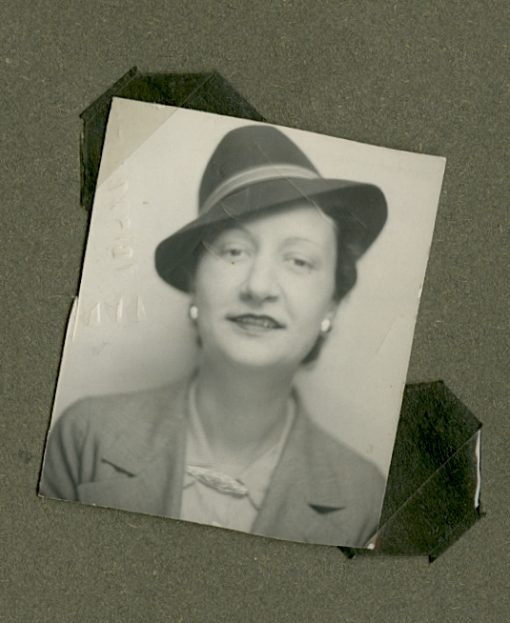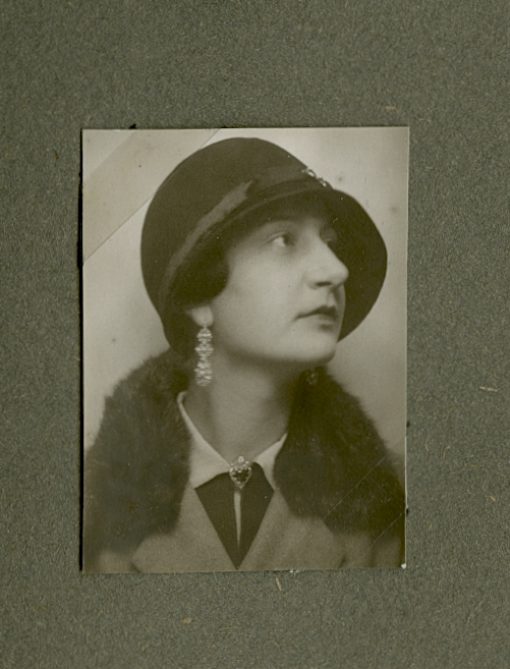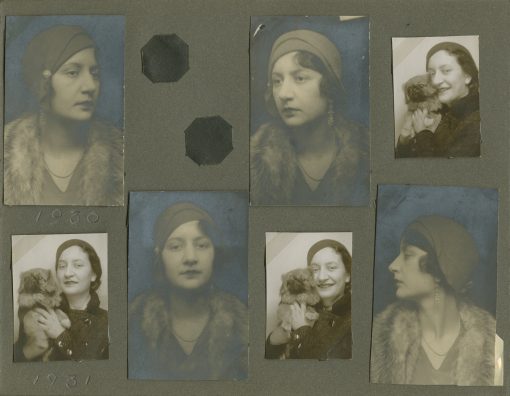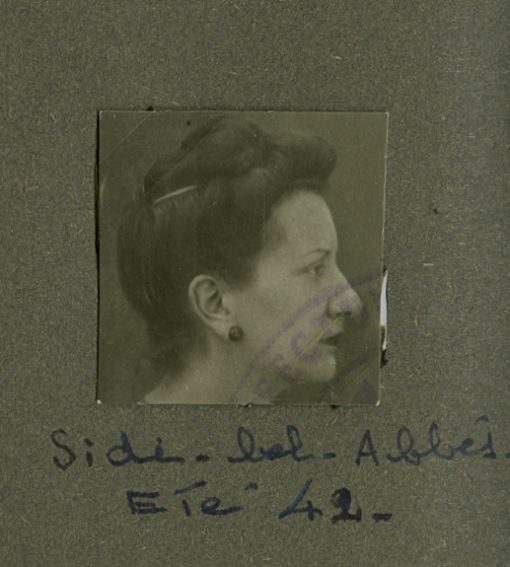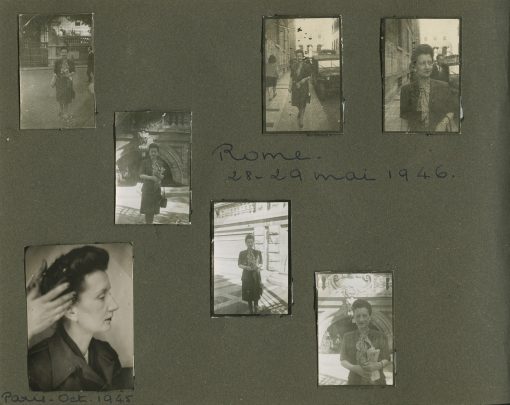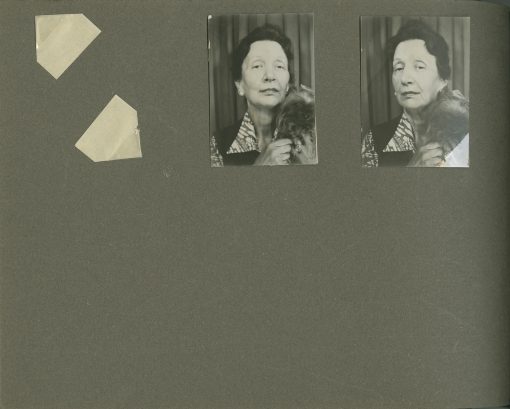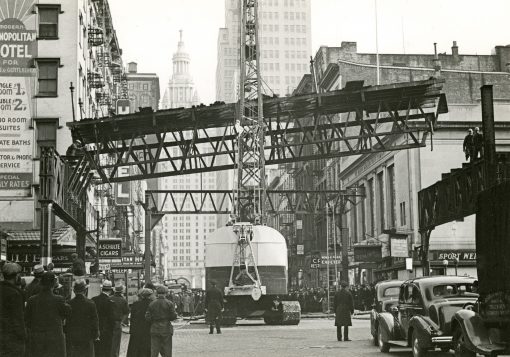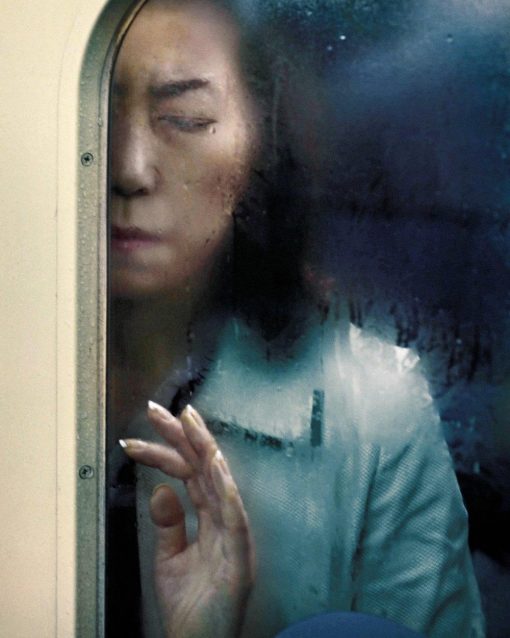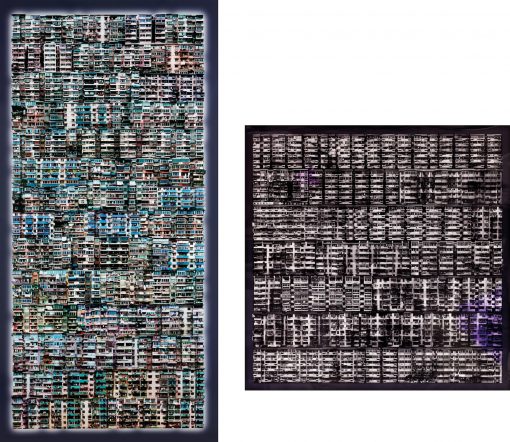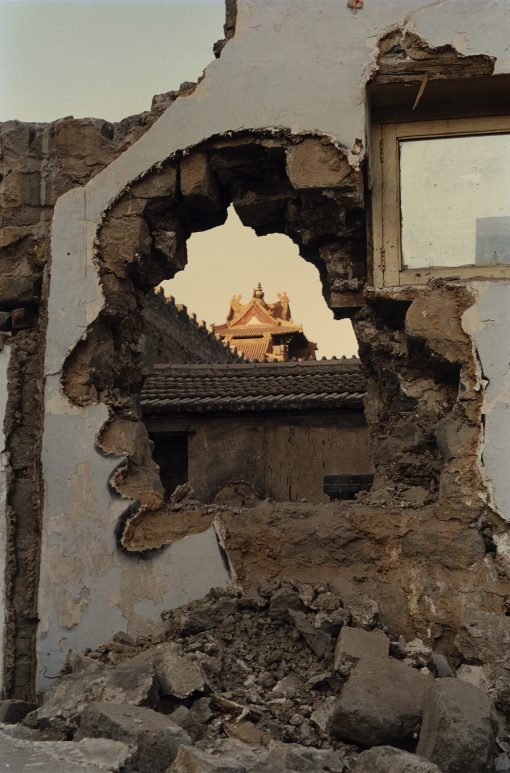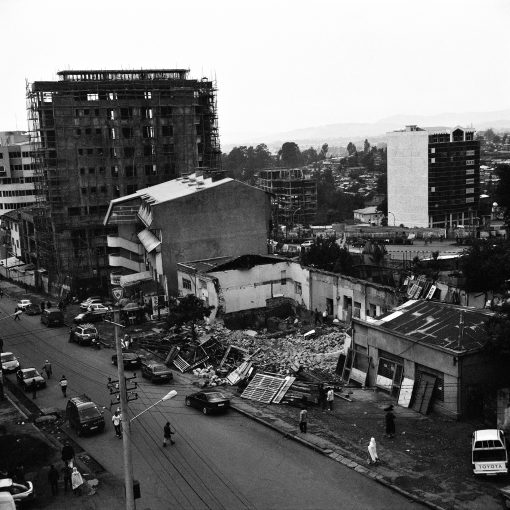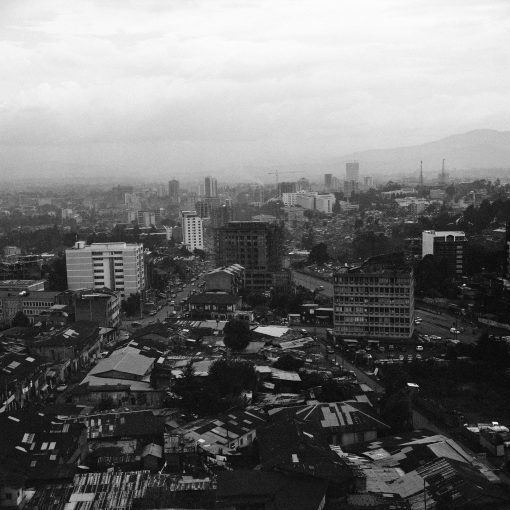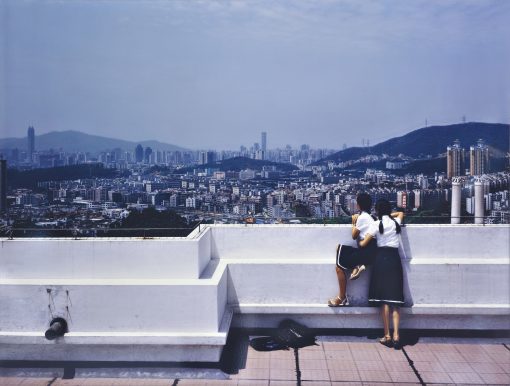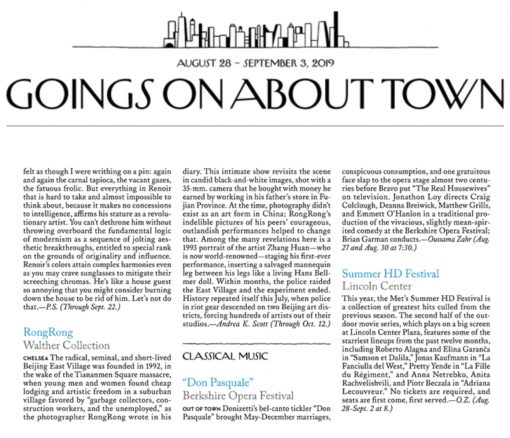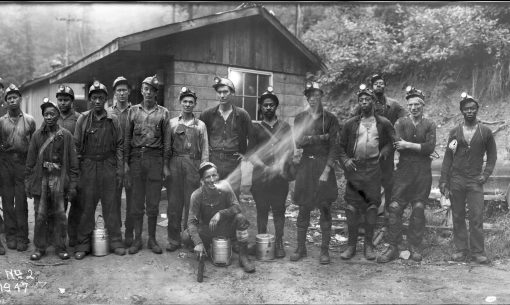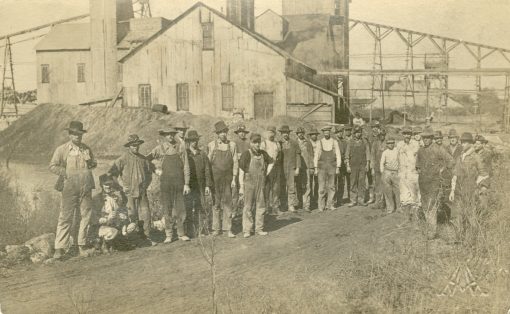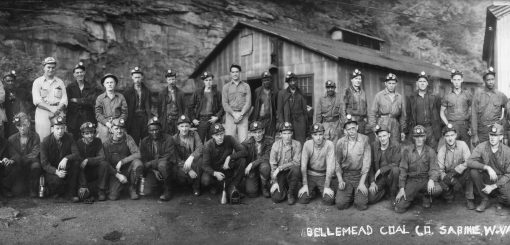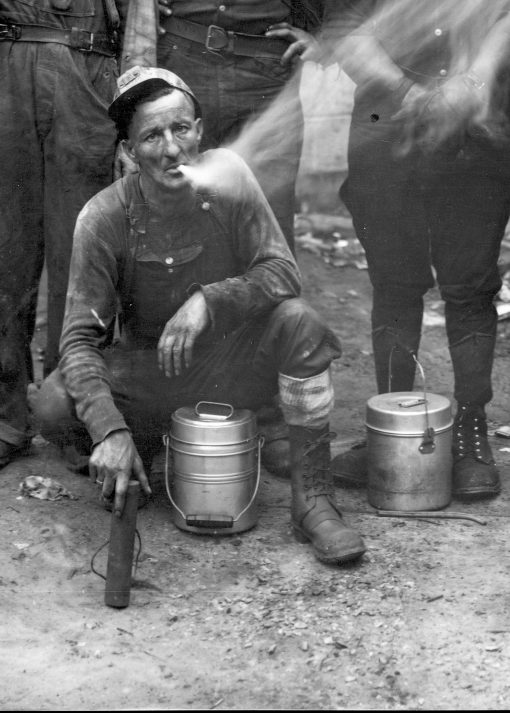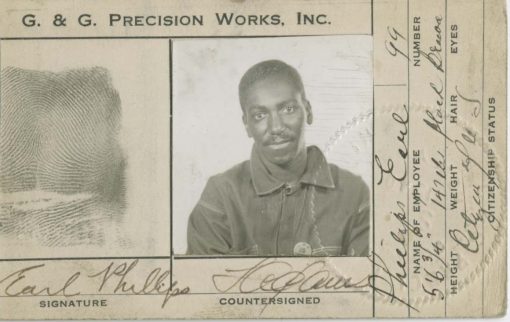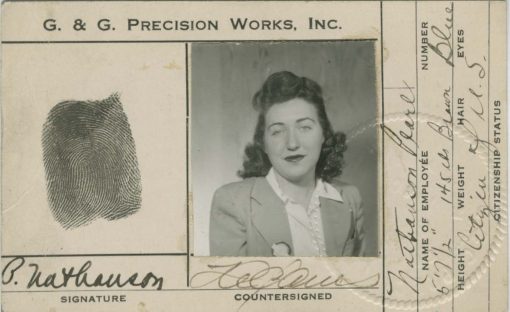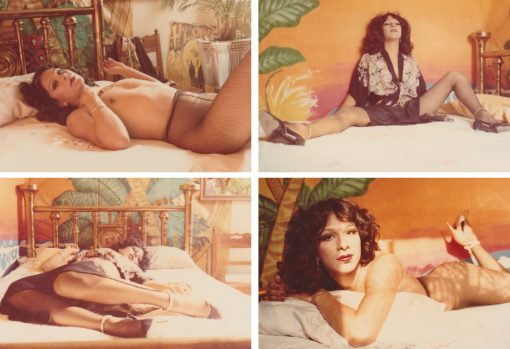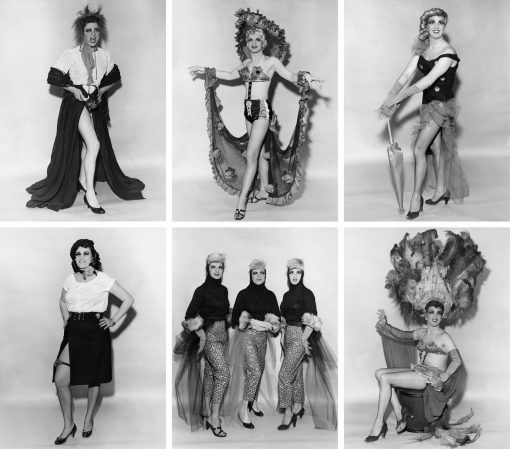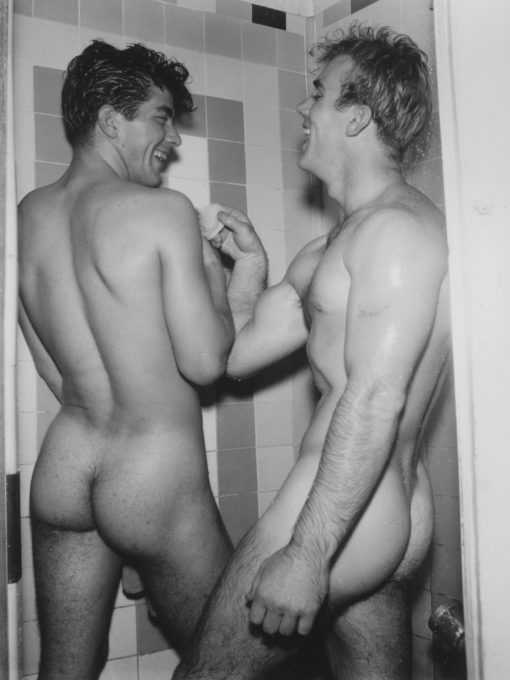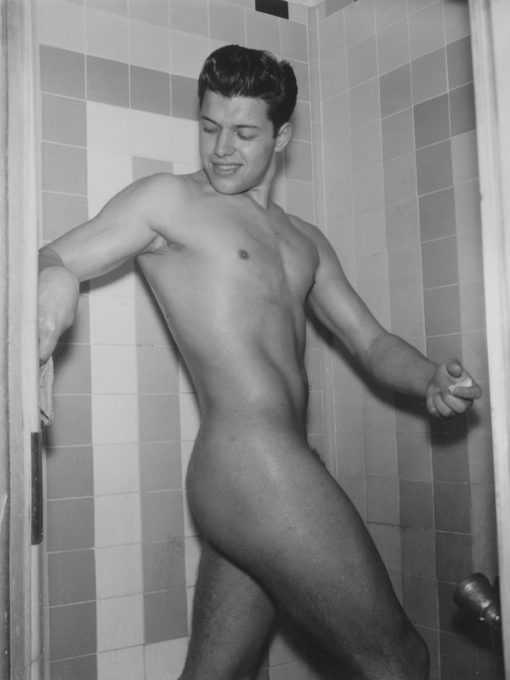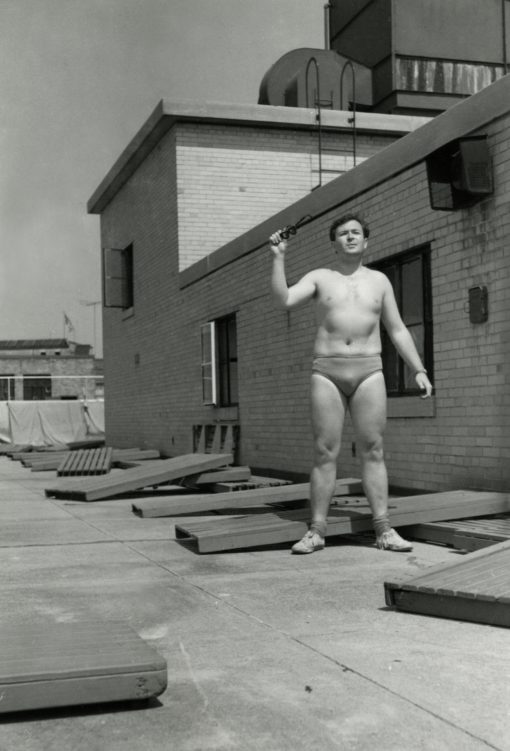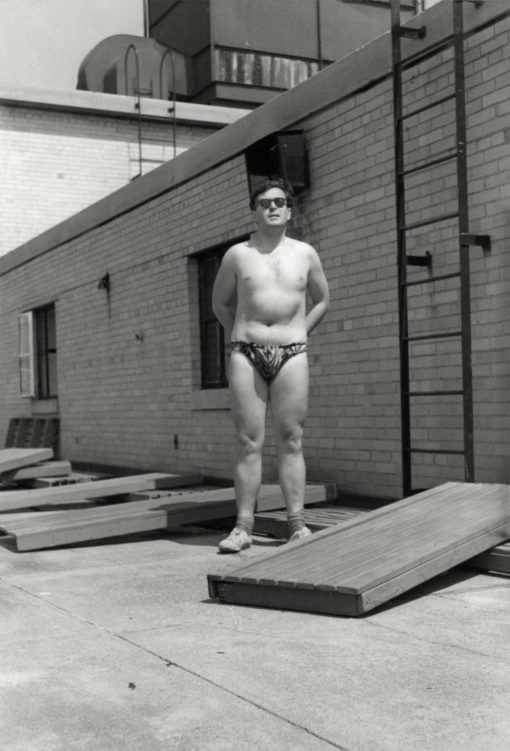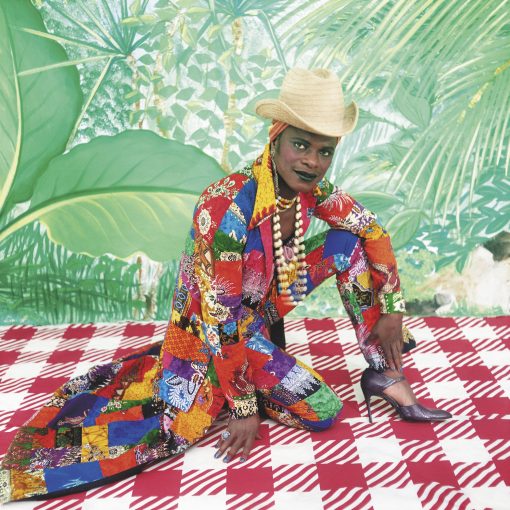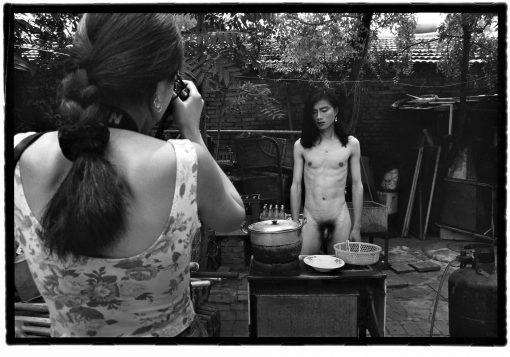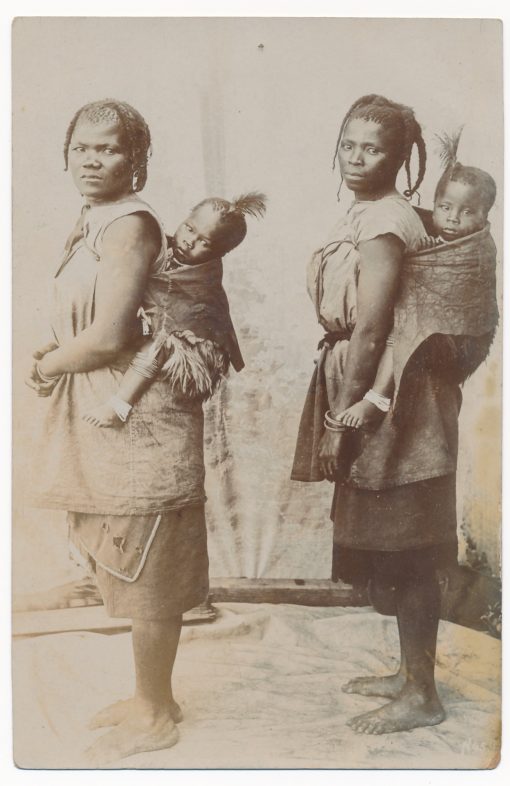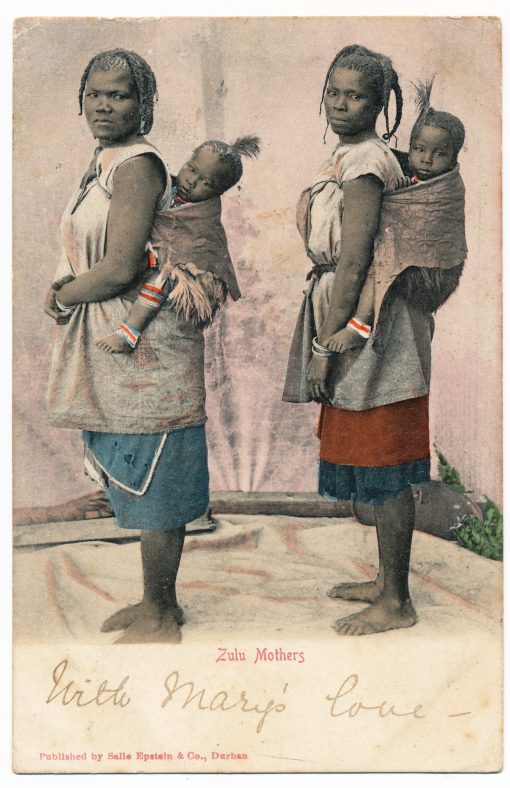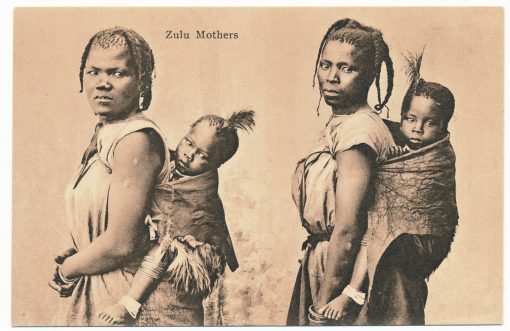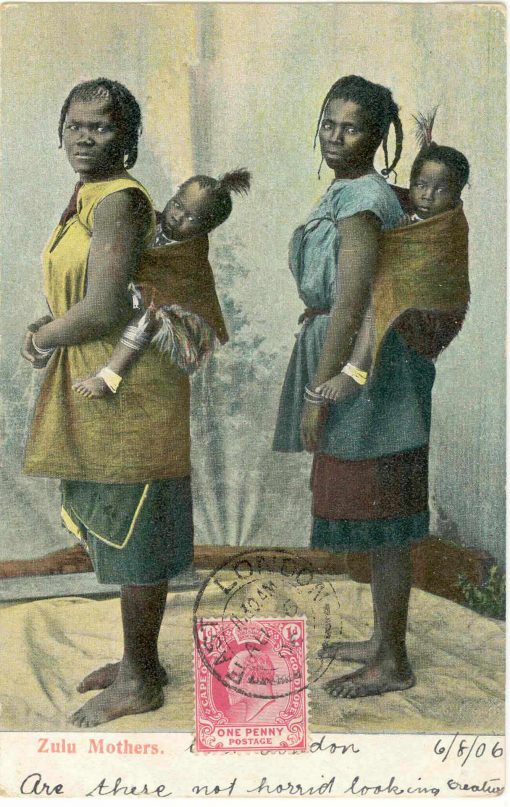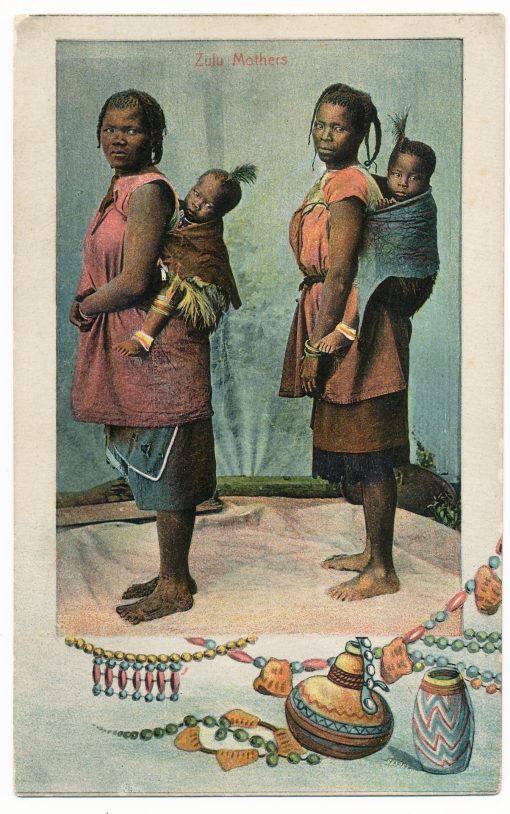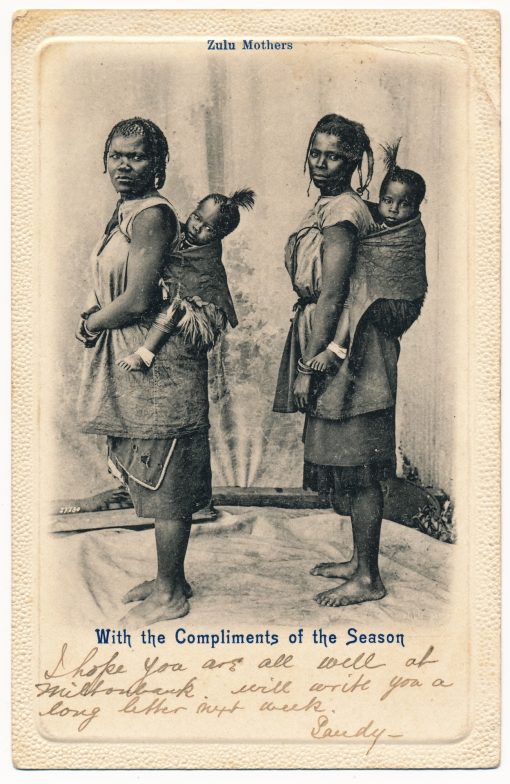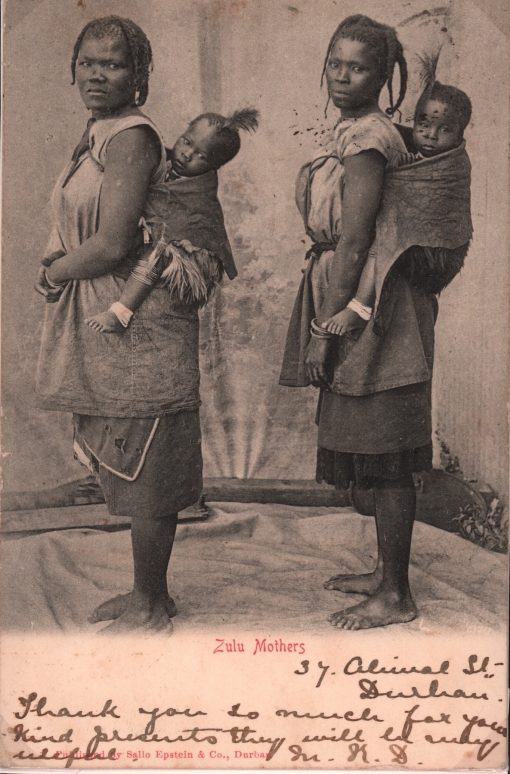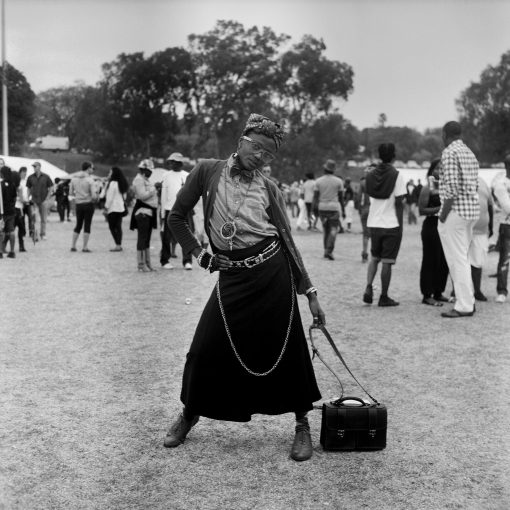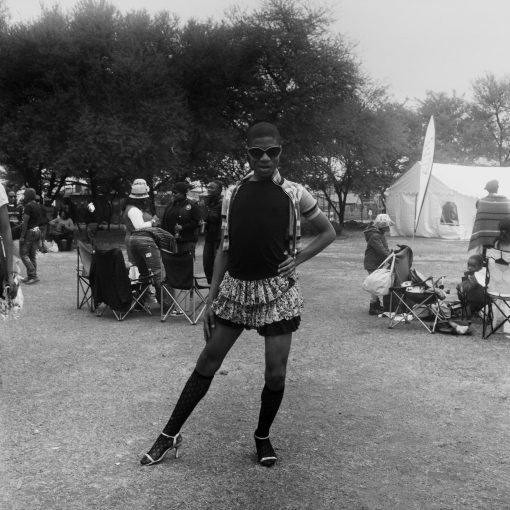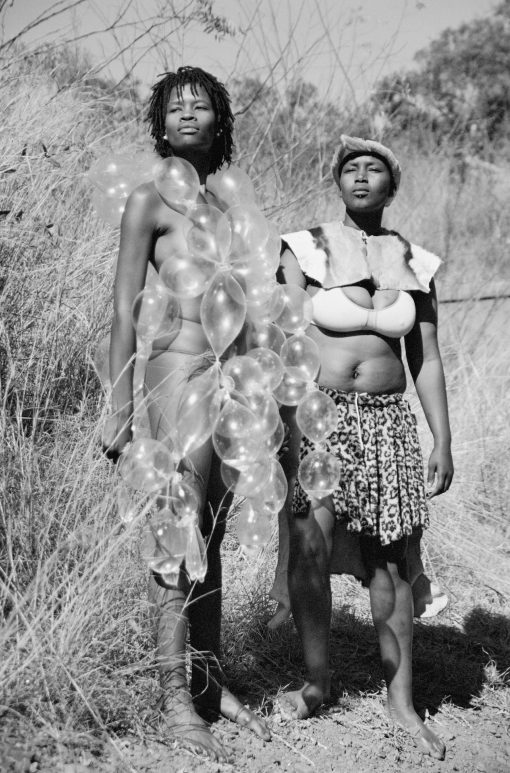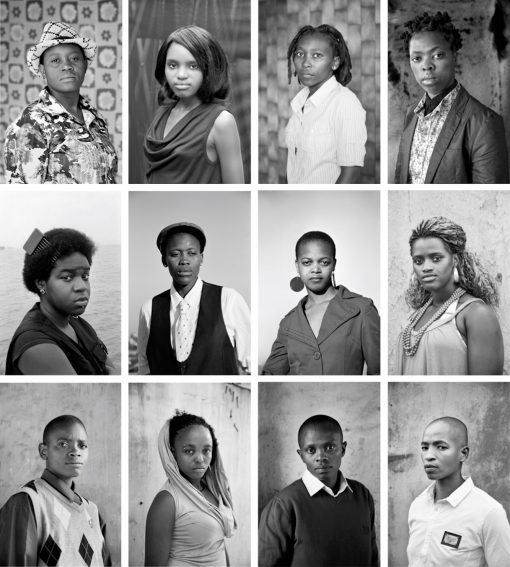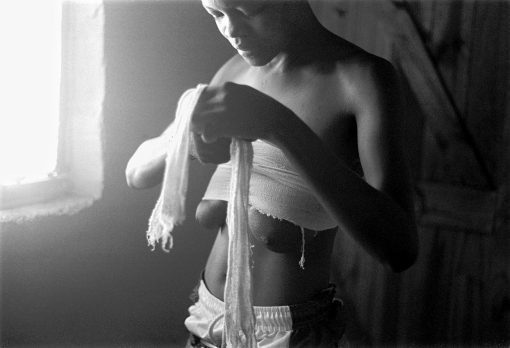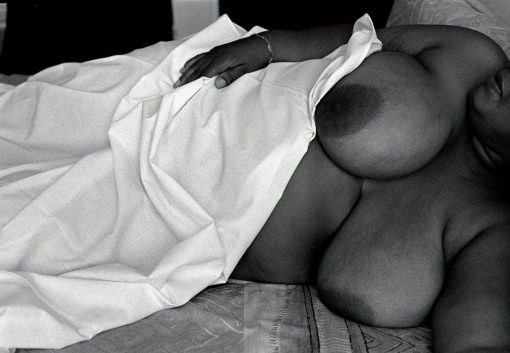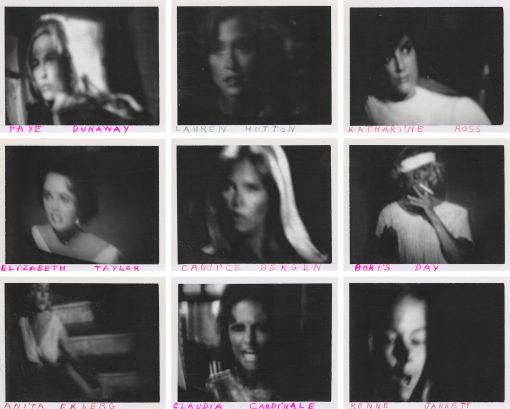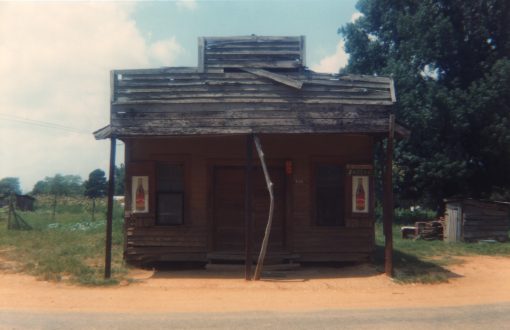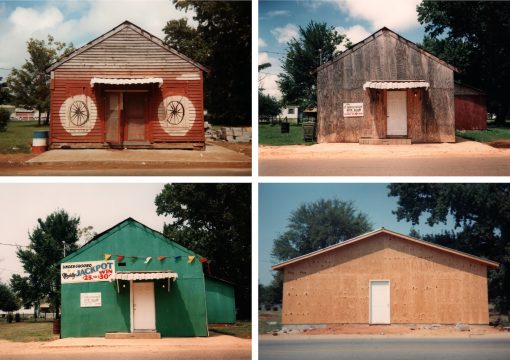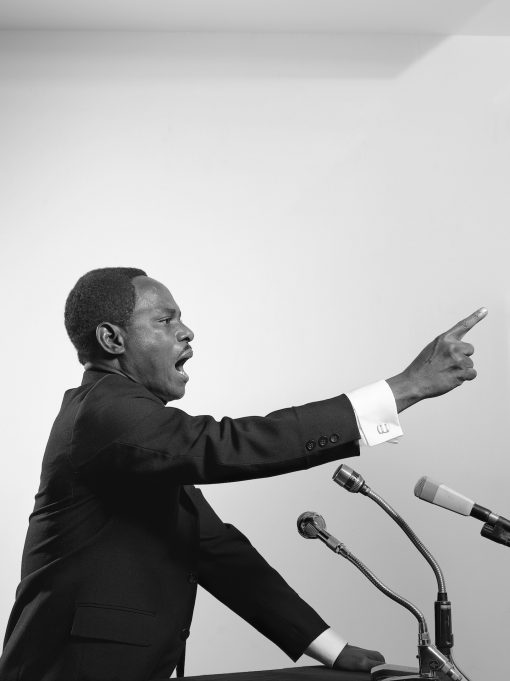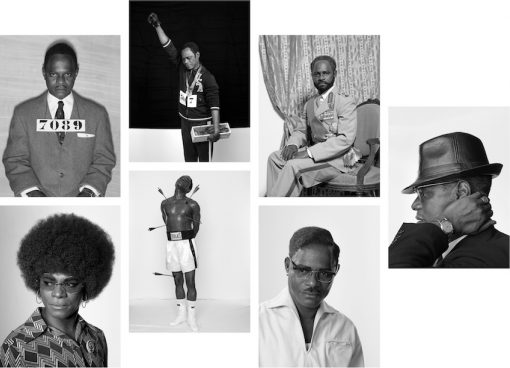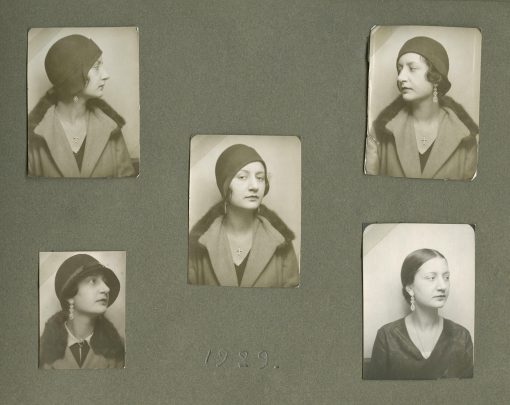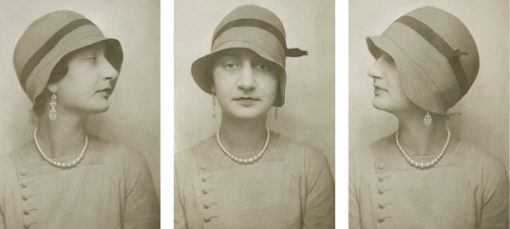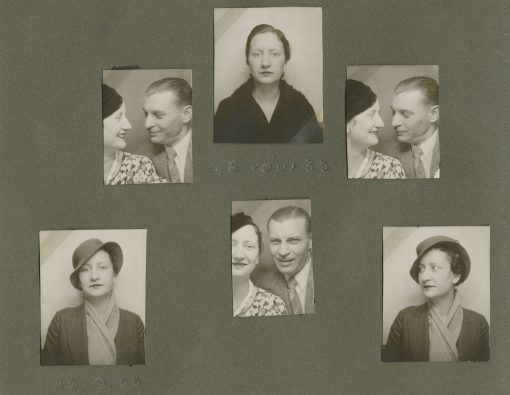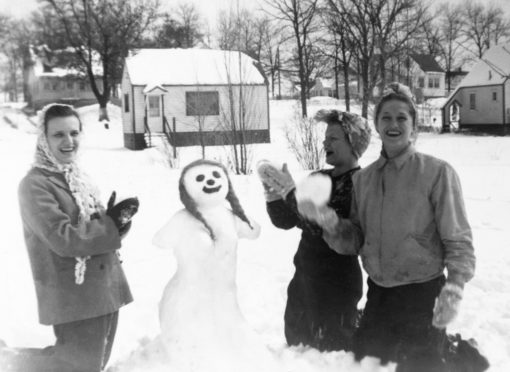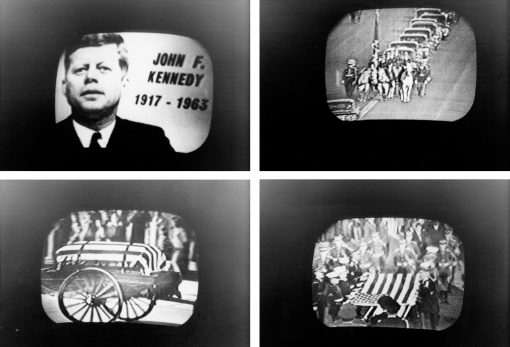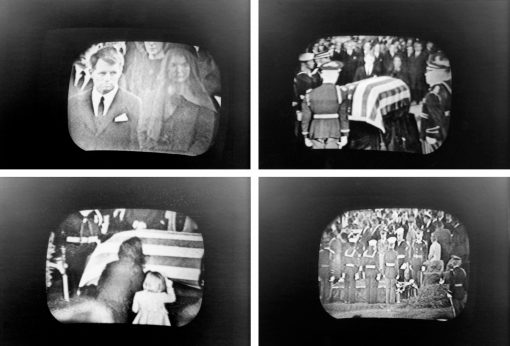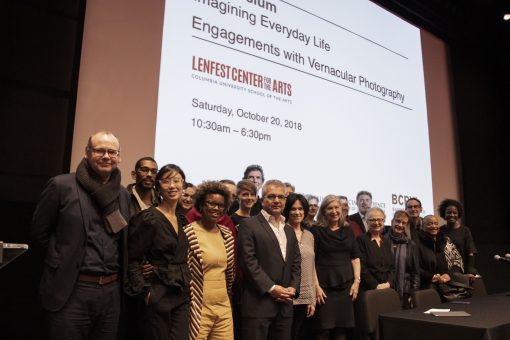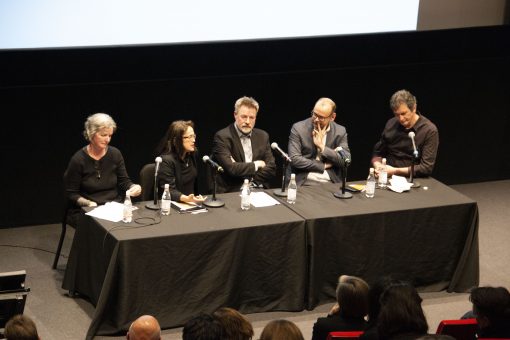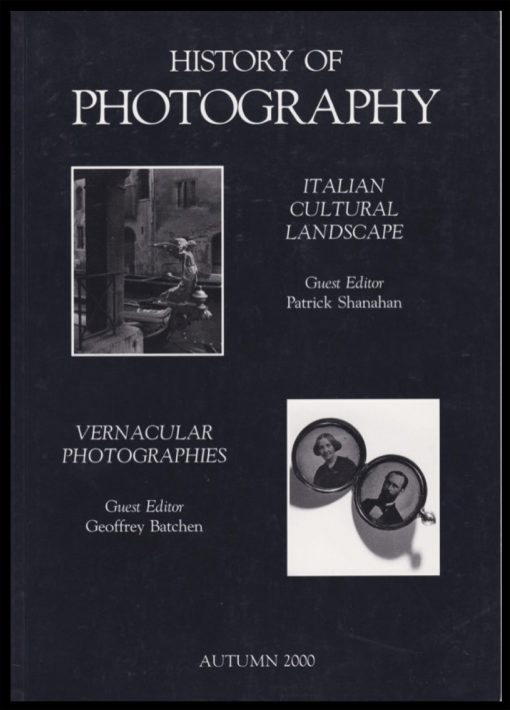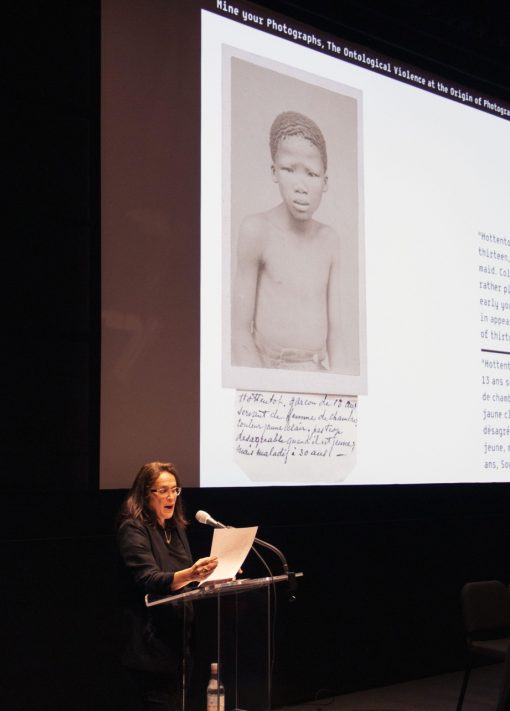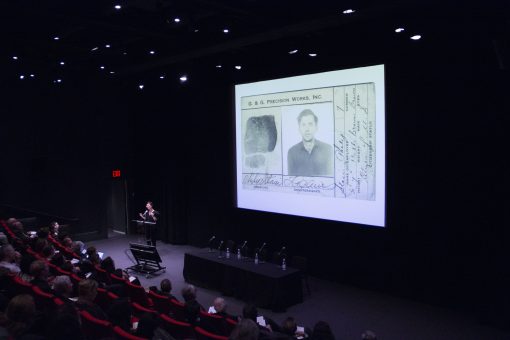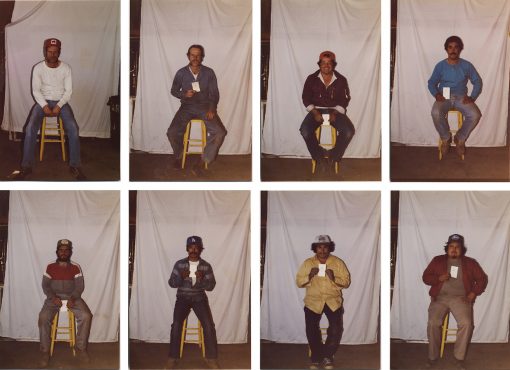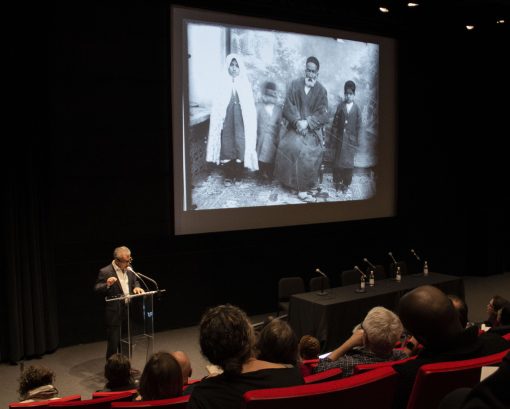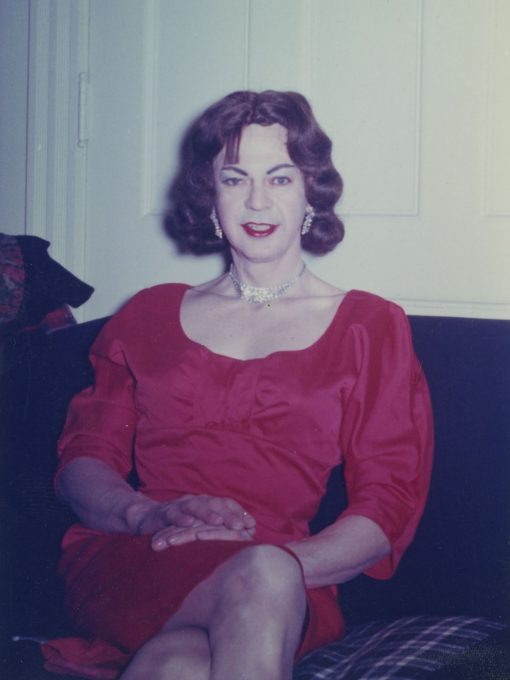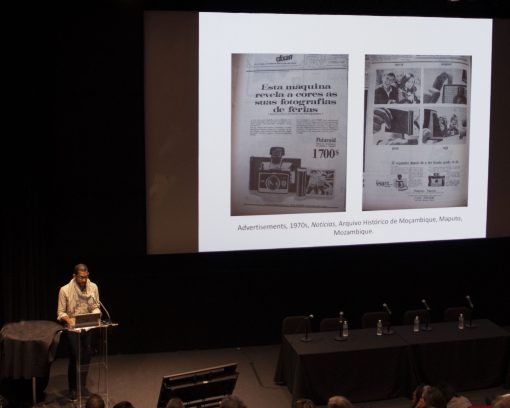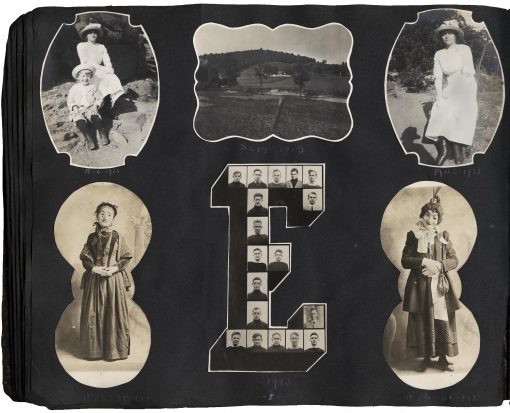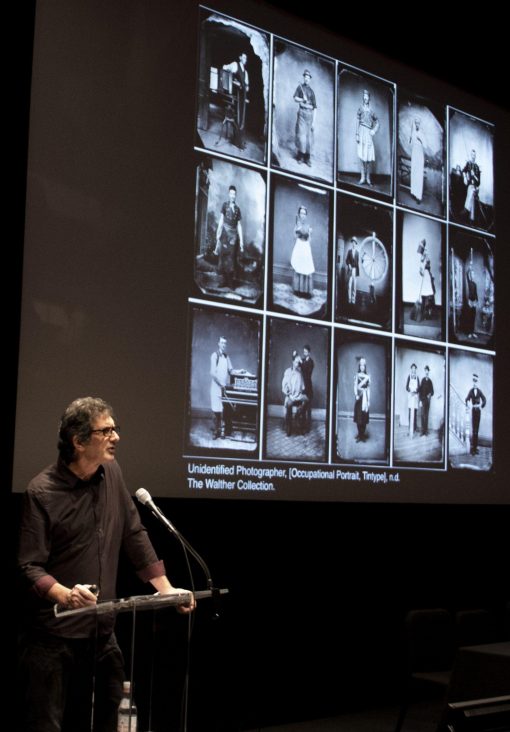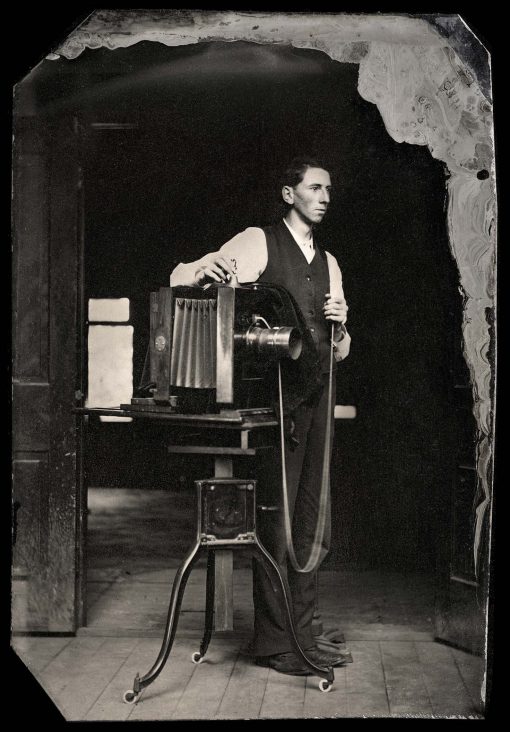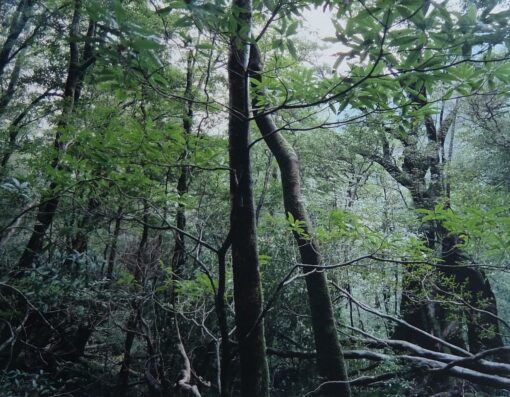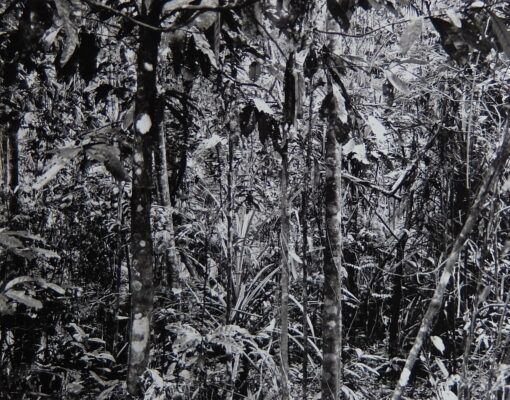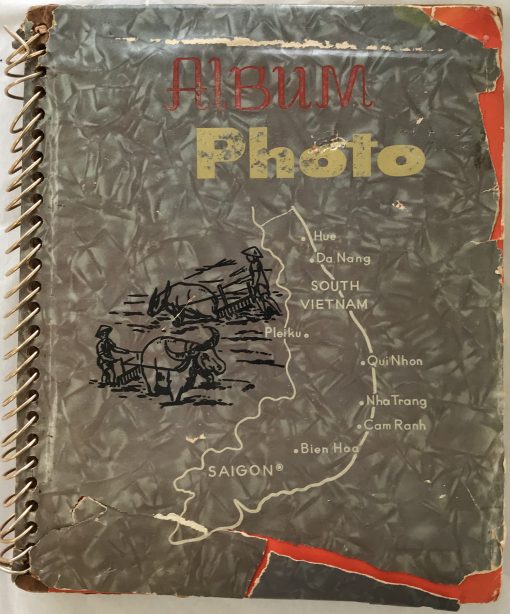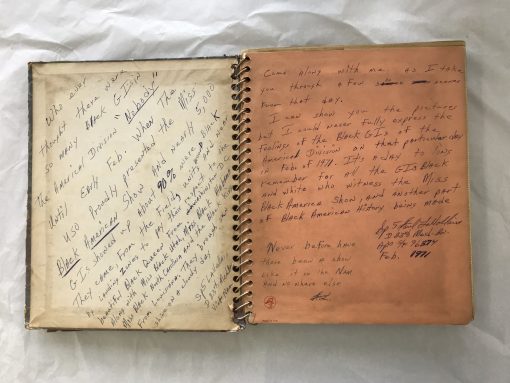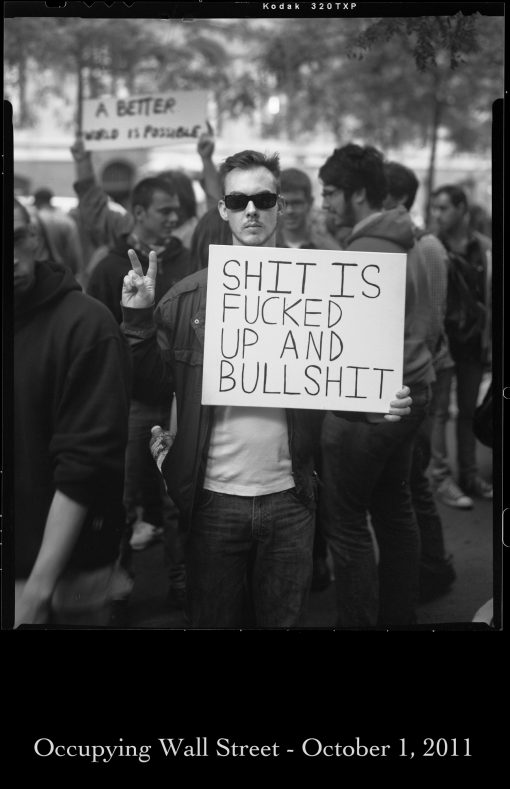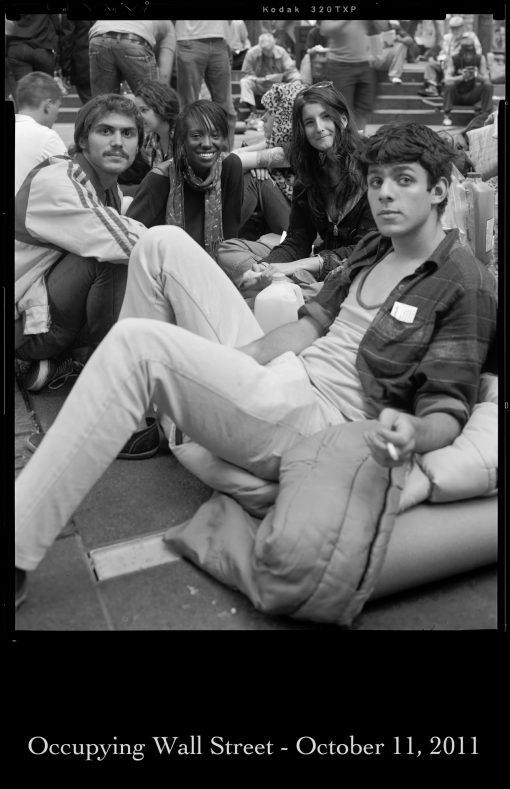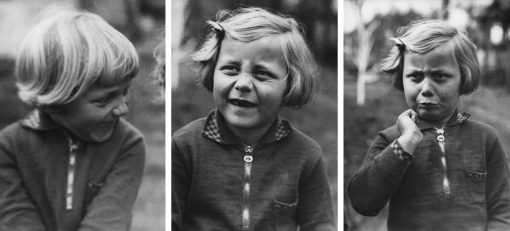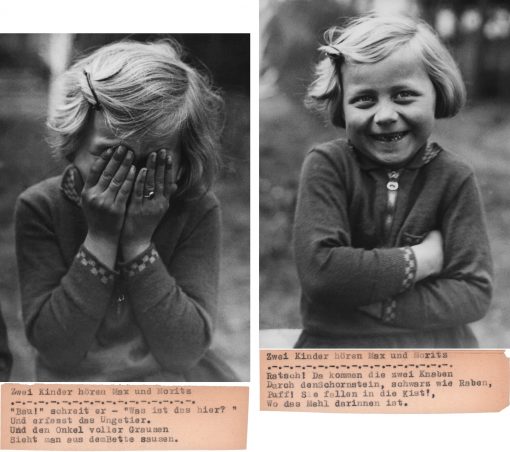The Museum Campus in Neu-Ulm will be closed in August.
Please note that the Museum Campus in Neu-Ulm will be closed in August for the summer holiday. We will re-open on Friday, September 1, between 2 – 5 pm, and look forward to welcoming visitors to see the dialogic exhibition Beyond the Binary: Santu Mofokeng and David Goldblatt – on view until November 19, 2023.
During this summer break, we encourage you to visit "Stadtkind," a local community hub and popular bar in the heart of Ulm, to view our new series of curated image projections featuring select works from the Collection, presented across three digital screens.
We wish everyone a safe and enjoyable summer and look forward to welcoming you again soon.
New Appointment
Renée Mussai joins The Walther Collection as Artistic Director and Chief Curator
We are delighted to announce the appointment of London-based curator, writer and art historian Renée Mussai as the first Artistic Director of The Walther Collection, and its new Chief Curator. The double role will comprise leading the Collection's curatorial, editorial and scholarly initiatives, alongside shaping its future artistic program vision and new acquisitions.
An established research-led curator and scholar of photography and visual culture, Renée joins The Walther Collection with more than 20 years’ experience in the arts, following two decades as senior curator and head of curatorial & collection at Autograph, London – a long-term role enhanced by a rich track-record of independent curating, publishing, writing and teaching internationally.
Working between London, New York and Neu-Ulm, Renée will be responsible for The Walther Collection’s wide-ranging international activities, with a focus on expanding the scope of its publishing program, collection development, and travelling exhibitions through institutional collaborations.
“I am thrilled to be joining The Walther Collection and feel both honored and privileged to lead the next chapter of this remarkable cultural resource, building on the foundation’s profound commitment to supporting a diverse constituency of artists working in lens-based media, and amplifying the collection’s exceptional dual scholarly and curatorial remit. I look forward to forge new partnerships, working closely with ground-breaking artists, curators and scholars from different backgrounds, and to continue to create exciting programming that will offer new knowledge, expanding the field for and with photography and moving image communities globally.”
As Artur Walther says,
“Renée
has been a close friend of the collection since its inception and was
curatorial advisor for our recent projects, such as the African photography
exhibition “Shifting Dialogues” at K21 in Düsseldorf and played a crucial role
in the development of our upcoming survey show “Trace – Formations of Likeness”
at Haus der Kunst in Munich. I have long admired her curatorial work at
Autograph, her writing and publications, and commitment to research and
excellent scholarship. I am deeply pleased that she join us full-time as
artistic director and look forward to continue developing the collection with
her, and expand the boundaries of the photographic medium together.”
Profile
Renée Mussai is a London-based curator, writer and scholar of photography and lens-based media with a special interest in African and Afro-diasporic black feminist and queer visual arts practices.
The former senior curator and head of curatorial & collection at Autograph, London, Mussai was responsible for a wide range of critically acclaimed exhibitions, artist commissions, research initiatives and publications and has organised numerous solo and group shows in Europe, Africa and America over the past two decades, including immersive gallery installations for Zanele Muholi’s Somnyama Ngonyama—Hail the Dark Lioness’ (2017 – 2021); Phoebe Boswell’s ‘The Space Between Things’ (2018); and veteran Ghanaian photographer James Barnor’s first-ever retrospective ‘Ever Young’ (2010), amongst many others.
Alongside her research-led curatorial practice, she lectures and publishes widely on photography and visual activism. Her publications include Lina Iris Viktor's award-winning exhibition monograph Some Are Born to Endless Night—Dark Matter (2020), and the forthcoming Eyes That Commit: Black Women and Non-Binary Photographers—A Visual Survey’ (Prestel, 2023) and ‘Black Chronicles—Photography, Race, and Difference in Victorian Britain’ (Autograph, 2024).
Between 2009 and 2018 Mussai was regular guest curator and non-resident Fellow at the Hutchins Centre for African and African American Research at Harvard University, and she is currently Research Associate at the Visual Identities in Art and Design Research Centre, University of Johannesburg; Associate Lecturer at University of the Arts London; and doctoral candidate in the department of art history at University College London.
Read an in-depth interview here:
1000 Words / Curator Conversations: #15 Renée Mussai
Photo Credit: Renée Mussai, 2022 by © Christa Holka
The Culture Prize 2021 of the German Society for Photography is awarded to Artur Walther.
The Culture Prize 2021 of the German Society for Photography (DGPh) is awarded to the art collector Artur Walther, who since has been collecting the works of photographers from Europe, Africa, Asia and their diasporas since the 90s’ and has significantly contributed to making their work known in the USA and Europe.
Having grown up in Burlafingen, a district in Neu-Ulm, the German-American opened The Walther Collection campus in June 2010. In two typical suburban architectures and a new building with underground exhibition space.
In the exhibition space, the collection presents its extensive holdings of modern and contemporary African photography and video art, recent Chinese and Japanese photography and media art, as well as historical photography from 19th-century photography from Europe and Africa, as well as vernacular photography from all over the world. The Project Space in New York, which opened in 2011, presented — in a dynamic interplay with the main collection — new aspects and experimental projects of the collection. A special exhibition in Arles in 2014 was the first to showcase thematically linked photographs from all areas of the collection; since then, The Walther Collection has been able to present over fifteen such international exhibitions worldwide. The collection includes works by relevant photographers of different cultures and times, including Ai Weiwei, Richard Avedon, Bernd and Hilla Becher, Samuel Fosso, David Goldblatt, Huang Yan, Seydou Keïta, Sabelo Mlangeni, Santu Mofokeng, Daido Moriyama, Zanele Muholi, Jo Ractliffe, RongRong, August Sander, Malick Sidibé, Guy Tillim, and Yang Fudong. Their works often question the socio-cultural stereotypes that form around concepts of race, gender, sexuality, class, and nationality. The investigation of one of the central human questions, that of identity and its social construction, is addressed by The Walther Collection‘s focus on portraiture and, in particular, self-portraiture. Another focus is on specific aspects of the Anthropocene, especially those within landscape, urban, and public space, which serve as a basis for collective action and individuality.
The collector and patron Artur Walther is keen to connect: "Artur not only collects our images, he brings us all together," says the South African photographer and activist Zanele Muholi. In this way, the collector makes an important contribution to broadening Western perspectives by making positions from Africa and Asia visible, as well as to the global networking of photography and the people associated with it.
In collaboration with Steidl Verlag, The Walther Collection also runs an extensive publication program, which includes in-depth research by important theorists, critics, and art historians, in various exhibition catalogs and artists monographs.
Artist monographs on Samuel Fosso, Santu Mofokeng, Zanele Muholi, and Jo Ractliffe, are just a few of the books that have been published. “Imagining Everyday Life,” a comprehensive survey with scholarly essays on amateur and everyday photography, was awarded the 2020 Paris Photo /Aperture Photobook Award for Catalogue of the Year. A total of 17 books have been published to date.
The Culture Prize has been awarded since 1959 and is the most important prize of the German Society for Photography. Since 2020, it has been generously sponsored by WhiteWall. With this award, the DGPh honors living personalities for their significant achievements in the field of photography. Past recipients of the DGPh Culture Award include Ute Eskildsen, Sarah Moon, Helga Paris, Gottfried Jäger, Klaus Honnef, Stephen Shore, Wolfgang Tillmans, Stephen Sasson, Wim Wenders, F.C. Gundlach, Daido Moriyama, Bernd and Hilla Becher, Henri Cartier-Bresson, and Man Ray.
Press images and the press release can be downloaded from the DGPh-
Website or also via the DGPh office.
Contact:
Deutsche Gesellschaft für Photographie e. V. (DGPh)
Regina Plaar (Press & Public Relations)
Phone: +49(0)221 923 20 69
presse@dgph.de
www.dgph.de
Remembered and Forgotten: A Reflection on Photography
This photographic album chronologically spans the adult life of a French woman. At first glance, it appears to be an album compiled of photo booth images taken in a matter-of-fact way. At closer examination, the scrapbook is combusting with tiny hints and secretive gems; opening up who this anonymous person is, and almost more importantly, what she stands for.
The documentation begins in June of 1928 and ends with an unmarked date. Yearly, this French woman would revisit a photo booth, using the booth as an autobiographical tool to take photographic power into her own hands. The technology from the photo booth allows for this self-reclamation, reverting the usually present male gaze and providing a feminist voice. While sequentially sorting these images into a book, she simultaneously conceptualizes herself, continuously attempting to mechanically and medically document every angle of her face.
The clues she gives us about her life are at best discrete. The octagonal adhesive marks seem poetically placed, symbolizing images that have fallen out over time. These lost photographic scraps were once methodically archived. Now, their remains elevate the mystique and incoherence of her identity.
The one person she introduces in the album is a man on August 26, 1933. They share glances and smile at one another. The additional figure only appears on one page, sharing her annual private photographic experience. The small ambush within this page is striking. We witness a performance not for herself, but for this man. This shifts the photo booth as a tool for self-portrait exploration into a chronicler of relationships and experiences.
The anonymity of the subject is made more complex by the fact that she never writes her name in the album. This project was first shown at The Walther Collection in the fall of 2018 in an exhibition titled Scrapbook Love Story: Memory and the Vernacular Photo Album. Was this album intended to be viewed? There is something haunting about having ownership over photographs without knowing the maker’s wishes. Nevertheless, this album was discovered, resurrected, and transformed from a personal memento mori into a reflection on our own interrelationships with photography. In our current digital age where photographs are used for instant gratification, it’s a unique experience to meditate over an album that has a slowly unfolding self-awareness.
She gives us our first understanding of the setting in 1939, simply writing, “Paris” below the images. The photo booth obviously lacks any sense of space, but for the next few pages, the setting becomes a critical element, and these placeless photo booth images become grounded and concrete. Once the location is introduced, the previous lack of location seems disorienting. If photography materializes space, time, even memory, then one must question the goal of this album. Is she photographically trying to hold onto her own subjective memory, or is the objective nature of the photo booth doing something more?
She travels from Paris to Montauban, France in 1941, and then to Sidi-bel-Abbès, Algeria in summer 1942. This trip to Algeria marks a critical turn in her subtle plot. She writes, “American Red Cross,” which can also be seen by her uniform. The next page depicts a trip she took to Rome from May 28 to 29th, 1946. This is documented by snapshot street portraits, a break from the continuous photo booth rhythm.
These pictures indicate a person behind the camera, deviating the nature of what we’ve been looking at. Photo booths lack the dynamic between photographer and subject; this photographic journey has primarily been solo. That singularity is emphasized by the deadpan format of this album. The fictitious quality within photographs is at odds with the objectivity and anonymity of the photo booth. Through this act of documentation, she memorializes herself while also reflecting on her own temporality. This strong sense of place now formalizes her, establishing a rift between who she is both inside and outside of the photo booth.
The years pass by with more graphically arranged photo booth pictures. There are more dates, more obscurity, more physical dissections of self. The final pages of the album return to a simpler format. The woman has visibly aged, but she no longer writes the time or place below the photographs. She shares a photo booth session with her dog, she appears more stoic, the geometric pages now become interrupted by the blank green pages of the album.
As I finish turning the pages, I can’t help but question “Why?” Why does someone feel the need to mechanically document their life? Is it rooted in our own mortality and fear? Fear that our lives, though they may be complex, are all similar? And though fear of death is critical to human nature and social structures, our own fear of being forgotten can be seen at the heart of this project. This woman has taken the bases of existence — time, space, life, memory — and slyly placed it into a simple photo album: making us question our own understanding of existence and how to express that photographically.
– Francis Schichtel
Photography and Transformation in Urban China
At this time, 94 percent of the Chinese population lives in big cities, all located in the eastern part of the country. The other parts of the country have become increasingly deserted; as recently as the early 1980s, a large part of the Chinese population lived in rural areas. Such rapid urbanization was a result of the economic reforms under Deng Xiaoping (1904–1997). These initiatives were intended to stimulate the country's growth, which is why the government pushed the transformation of cities into major industrial metropolises, especially in the 1990s.
The transformation of urban space is an important topic in Chinese art, and many artists today use photography to depict the structures of the modern megalopolis. It seems that this medium is perhaps better suited than others to reproduce the smooth facades and outsize dimensions of the monumental skyscrapers. Such images, however, are not new: photographers have dealt with the theme of urbanization since the advent of the medium. Charles Marville (1813–1879), for example, famously recorded the modernizing transformation of Paris in the nineteenth century, stewarded by Baron Georges-Eugène Haussmann, which the French poet Charles Baudelaire (1821–1827) often lamented:
"Old Paris is no more (the form of a city
Changes more quickly, alas! than the human heart)"
– Charles Baudelaire, "The Swan", The Flowers of Evil, 1857
In the meantime, New York, with its dizzying high-rise architecture, has become the epitome of the modern metropolis. The skyline view of Manhattan has degenerated into a popular postcard and poster motif—now almost ordinary and banal. Perhaps the megapolis of the 20th century has lost its sensational allure, at least in the USA and Europe, but the same is not true of images of Chinese cities, which still attract a lot of attention. But why? Perhaps because of these cities' unprecedented size and demographics: images help us to understand how 27 million people can live in Shanghai or 34 million people in Chongqing.
How do these images manage to arouse our interest? What do Chinese photographers think about this metropolis-centric representation of their country? And what place do such photographs have in The Walther Collection? A comparison of the works of the German photographer Michael Wolf and the works of Chinese photographers from The Walther Collection will examine the questions in more detail.
Michael Wolf, who died in April 2019, was not a foreigner in China: he had lived in Hong Kong since 1994 and spent most of his career as a professional photographer in Asia. He was interested both in the architecture of the big cities and in the people who inhabit them. For example, the series "100 x 100" explores how people manage to adapt to these often narrow, hectic and crowded environments. "Tokyo Compression" also impressively depicts the lack of space in the Tokyo subway.
Many Chinese photographers dealing with the theme are represented in The Walther Collection, and live in different megacities in the country: Luo Yongjin and Xiang Liqing live in Shanghai, Miao Xiaochun and Zhang Dali in Beijing, Weng Fen and Yang Yong in Shenzhen. They are between 44- and 59-years-old and experienced the dramatic change of these Chinese cities as young adults. An exception is Sze Tsung Leong, who grew up outside China and now lives in the USA. Although the photographers examine the same subject, each of them deals with it in their own unique way.
To add visual interest, many photographers choose unusual formats and perspectives. For example, panoramic images are common to show the vastness of a city. Photographs from a worm's-eye view taken from below looking up are also widespread. Both viewing angles make it possible to show the buildings in their entirety and emphasize the dimensions of the objects. They give the viewer the impression of being a Lilliputian in Gulliver's world.
Michael Wolf's photographs deviate from these well-known staging strategies, as he only photographs parts of buildings. Wolf fades out the horizon, and it seems as if the buildings are endless. Anyone looking at his photographs feels the claustrophobic narrowness of Chinese cities. The view of these buildings is hypnotic: it's easy to forget that this is a city in which millions of people live. The windows seem so small that they seem like mere holes on a concrete surface, abstracting the living space of many people into a graphic structure.
With their conceptual photomontages, Xiang Liqing and Luo Yongjin create fictitious reconstructions to capture a view of Chinese cities beyond the documentary. For Rock Never 1 (2002) Xiang Liqing digitally stacked the buildings of a slum in Hangzhou, where he himself studied and lived, creating a very tall building that doesn't actually exist. Luo Yongjin photographed the various construction phases of the Lotus Block (1998–2002) and then combined the images into a single composition that represents a kind of time-lapse. With a length of four meters, the grid of 60 individual shots cannot be grasped at a glance, which creates a parallel to the immensity of the city.
With its strong color and seemingly perfect view of the Hangzhou facades, Xiang Liquing's Rock Never 1 (2002) could be an advertisement for new apartments in Chinese cities. But nothing is real: the building does not exist and the artist has manipulated the images to paint the facades and personalize the balconies. Indeed, it is easy to imagine that life in Chinese cities can be anything but cheerful. Another picture by Xiang Liqing entitled Grey (2000) is similarly structured, but shows all the buildings dyed a drab shade of grey to refer to the monotony and gloom of everyday life in the big city. The artist also seems to be questioning the principle of the standardization of apartments, recalling Le Corbusier's "Unités d'habitation" throughout Europe in the 1930s and 40s.
Zhang Dali, a famous figure of Chinese street art, also deals in a unique way with the theme of urban transformation. First he spray-paints and chisels a human profile onto the walls of buildings slated for demolition, then photographs his intervention. He invites the viewer to be aware of the danger that destroying these buildings will destroy a piece of China's cultural identity. At the same time, the drawing of the face is a means for the artist to refer to the human tragedies associated with forced resettlement, to create a community of solidarity in the face of these upheavals, and to emphasize the alienating character of the megapolis. These photographs are often the last traces of these buildings.
They recall the photo series "Future Memories" by the Ethiopian photographer Michael Tsegaye, who documented the structural transformation of Addis Ababa in order to capture street scenes and habitats that will soon belong to the past.
The destruction of urban structures has a long tradition in China. Sze Tsung Leong explains this as follows: "In China, history has been defined by the successive erasures and rewritings of the past". During the empire, for example, it was customary for enemy dynasties to completely destroy newly conquered cities before rebuilding them. During the Cultural Revolution, Mao wanted to demolish the forbidden city as a relic of a past system of rule. Against the backdrop of the massive transformation of Chinese cities over the past two decades, all these views, which capture the destruction of old and the construction of new structures, have the value of a historical document.
As such, it is interesting to wonder about what comes next, after decades of construction and the establishment of countless modern metropolises throughout China. Weng Fen's photograph of two schoolgirls admiring a modern cityscape in peace seems to represent a kind of utopia. But what might the two girls say? They are too young to know the former shape of Chinese cities. Are they aware of all the upheavals that the construction of such a city has brought with it?
Urban change in China is one of the themes of the exhibition Then and Now: Life and Dreams Revisited, which will be on view in Neu-Ulm until October 27, 2019.
– Laura Weber
We thank Barbara Wolf for granting permission to use Michael Wolf's photographs in this blog article. © Michael Wolf Archive and Estate.
RongRong in The New Yorker's "Goings on About Town"
In The New Yorker's September 2, 2019 print issue, Andrea Scott reviews Day After Day: RongRong and the Beijing East Village at The Walther Collection Project Space. The review in full is below:
"The radical, seminal, and short-lived Beijing East Village was founded in 1992, in the wake of the Tiananmen Square massacre, when young men and women found cheap lodging and artistic freedom in a suburban village favored by 'garbage collectors, construction workers, and the unemployed,' as the photographer RongRong wrote in his diary. This intimate show revisits the scene in candid black-and-white images, shot with a 35-mm. camera that he bought with money he earned by working in his father's store in Fujian Province. At the time, photography didn't exist as an art form in China; RongRong's indelible pictures of his peers' courageous, outlandish performances helped to change that. Among the many revelations here is a 1993 portrait of the artist Zhang Huan—who is now world-renowned—staging his first-ever performance, inserting a salvaged mannequin leg between his legs like a living Hans Bellmer doll. Within months, the police raided the East Village and the experiment ended. History repeated itself this July, when police in riot gear descended on two Beijing art districts, forcing hundreds of artists out of their studios."
In Celebration of Labor Day
On the first Monday of September, Americans observe Labor Day, a national holiday celebrating the contributions and achievements of the workers of the United States. The origin of this holiday can be traced back to the changes brought about by the Industrial Revolution and labor movement of the late 19th century, during which advanced mechanized manufacturing became the primary mode of production. This production was concentrated into mills, factories and mines in which working conditions were often unregulated, dangerous, and exploitative. In response, labor unions began to organize, fighting for safer conditions, reasonable hours, and increased wages for workers. Thanks to their collective efforts toward labor rights and reform, today we have eight-hour work days, two-day weekend, a minimum wage, standardized safety regulations, health benefits and care for work-related injuries, retirement funds, as well as the abolition of child labor. Furthermore, the rise of class-consciousness and the tradition of solidarity inherent in the labor movement is inextricably linked with civil liberties, social justice, economic equality, and human rights movements more generally. Labor Day became an official federal holiday in 1894, with an aim toward celebrating these achievements and the power of collective action.
The Walther Collection's vernacular photography collection has several examples of North American workers. Among them are group shots of miners, a notoriously dangerous trade that was at the forefront of the organized labor movement. Above is a photo postcard known as "Factory Workers, Rock Gold Miners." Little is known about the men pictured, but what we can confirm is that this is a real-photo postcard (or RPPC)—a photo-printing style that allowed amateur photographers to print their photos directly onto postcard paper, with a "split back" consisting of sections for both the postal address and written correspondence. This fact dates this postcard to after 1907, because it had previously been illegal to include correspondence on postcards until then. The "AZO" stamp postage markings and "full bleed" style help to further date it to before 1917.
Depicted are twenty-eight hard working men standing shoulder to shoulder, a few smiling though most are stone-faced, dressed in well-worn work wear and standing before a mining operation, that based on the title, was used to extract precious rock gold. Their stern, unified stance is no coincidence, as hard rock miners were some of the first to organize in the early days of the labor movement, including the radical Western Federation of Miners known for their organization of multiple strikes and clashes with the Mine Owners Association in the late nineteenth and early twentieth centuries. The National Federal Mineworkers Association fought for the eight-hour workday, which not only improved conditions for the workers, but also aided the mine operators avoiding overproduction that undermined their profits.
Similarly, the history of coal workers and organized labor are also closely linked; the Coal Workers Union being one of the oldest in the Unites States, and United Mine Workers of America one of the first. During the Industrial Revolution, as the demand for coal grew, so did profits and competition; smaller mine operating companies were bought out or forced out of business by larger ones which would come to dominate the industry. These large companies sought to keep the cost of production as low as possible, which resulted in an array of problems and poor conditions for workers, and eventually the organization of coal miners. They faced great danger in their work, high competition for jobs, regularly reduced wages, and exploitative circumstances despite the crucial role coal played in society; the mine owners saw the profits. The unions sought increased safety for workers, collective bargaining power, and freedom from company exploitation, such as the unfair practices of the "company" towns and stores. They, too, would go on to win several major strikes. Unionization continued to grow throughout the Great Depression, particularly after the passage of the National Recovery Act of 1933, which protected the rights of unions. Soon automotive, steel, electrical manufacturing, and other major industries joined in organized labor unionization.
For almost four decades, photographer Rufus Ribble traveled throughout the coalfields of southern West Virginia photographing coal miners, their families, and their towns. Ribble primarily utilized a large Cirkuit camera designed to rotate on a fixed tripod and take a continuous panoramic image of up to 360 degrees. The group pictures below are two selections from a larger panoramic image that provide a more detailed close-up view of the individual coal miners. This photograph dates to 1947 and depicts a group who worked the Minter coalmine in West Virginia: African American and white workers standing, proudly and seriously, side by side. A second photo taken in 1952 depicts a similar racially-mixed group of coal miners based in the Bellemead coalmines of Sabine, West Virginia, with a front row kneeling and a back row standing, wearing slightly different work clothes, and a few notable smirks.
The Labor Movement continued into the twentieth century, growing in numbers and diversifying during U.S. involvement in the Second World War. Below are a series of employee identification cards from G & G Precision Works, a small New York based manufacturer of mechanical tools and parts, featuring small black and white photographs, their name and some personal information, and a thumbprint. These probably date to the 1940s, during or just after the World War Two period. The citizenship status of the employee is included, perhaps a wartime effort to combat infiltrators to companies doing contract work for the government. G & G Precision employed a diverse work force, with a substantial percentage of the employees being either African-American or women, as was common during World War Two, though they still struggled for fair wages and were often excluded from skilled positions. In 1941, the labor leader A. Philip Randolph convinced President Roosevelt to set up a Fair Employment Practices Committee, including African American workers, which resulted in a 150 percent employment growth of African Americans by the end of the war, with unions such as the Congress of Industrial Organizations, the United Mine Workers of America, and the United Automobile Worker equally fighting for the rights of their members regardless of race.
Throughout the twentieth century, women have sought gender equality in labor. With the loss of their higher-paying union jobs after World War II, millions of women moved into the retail, health, education, and service sectors, which had relatively poor, unregulated working conditions. However, with the federal anti-discrimination laws of the early 1960s, the persistence of organized labor, and pressure from the emerging feminist movement, as well as the formation of the Coalition of Labor Union Women, strides were made toward ensuring nondiscriminatory hiring and promotion, equal pay, paid family leave, regulation against workplace sexual harassment and violence, and the availability of child care. The faces of the labor movement, like the workforce, are diverse, and many of the same rights and reforms are still being fought for today. While organized labor has declined over the past few decades, we still benefit greatly from the past contributions of workers involved in the labor movement, and Labor Day marks an occasion to reflect upon and celebrate the continued achievements and solidarity of workers in the United States.
– Ellen Enderle
Celebrating 50 Years of Pride
Every June, Pride parades are celebrated all over the world. These parades are known in Germany as "Christopher Street Day" or CSD. The name refers to Christopher Street in New York's Greenwich Village, where the Stonewall Inn is still located today. On June 28, 1969, violent riots between the police and activists of the gay and lesbian movement took place in front of this bar. The Stonewall Inn was considered a refuge for members of the LGBTQI+ scene, where they could meet and chat with people of similar interests without being harassed. At the same time, such bars were often a target for police raids. According to the law at the time, the police had the right to detain anyone who did not wear at least three garments identified with their gender. That June evening, visitors of the Stonewall Inn began to defend themselves against such a raid and the arrests associated with it. In memory of these events, members of the LGBTQI+ scene continue to take to the streets to fight for their rights and make their voices heard.
Depending on the epoch and culture, same-sex relationships have been evaluated, accepted, or criticized very differently. While homosexuality was tolerated in ancient Greece under certain conditions, homosexual acts were alternately considered a sin, as seen in the biblical stories about the cities of Sodom and Gomorrah.
The United States enacted its first laws against homosexuality in the 17th century, and such acts were typically punished by long prison sentences or hard labor. Each state formulated laws and determined sentences against sodomy—all sexual acts which do not take place between a man and a woman—thus causing significant variations in cases. In 1962, the Model Penal Code recommended that consensual sodomitic acts not be punishable by law, and individual states began to repeal such laws beginning in 1971—however it was not uncommon that extralegal, social punishment was still sanctioned. In 2003, the U.S. Supreme Court officially repealed federal laws against sodomy in John Geddes Lawrence and Tyron Garner v. Texas.
The Walther Collection owns numerous photographs representing the LGBTQI+ community. For example, American photographer Bob Mizer contributed to the formation of a homosexual counter-movement with his photographs of male homoeroticism. Though working at a time when homosexuality was forbidden and suppressed, Mizer founded the Athletic Model Guild in 1945. He cast young muscular men in photographs and had them pose nearly nude. In 1947, authorities sentenced Mizer to six months imprisonment for obscenity. After Mizer's release, he quickly found a new way to publish his pictures.
Mizer founded Physique Pictorial in 1951, which officially functioned as a fitness magazine but allowed him to address his pictures to a homosexual audience. Until 1962, the U.S. government forbade printing of completely nude photographs. Mizer avoided censorship issues by recreating backgrounds based on classical models and posing his models in a certain way. These specifications created stronger references to the themes of fitness and idealized bodies. Mizer's magazine Physique Pictorial also pushed illustrator Tom of Finland's career and inspired artists such as Robert Mapplethorpe and David Hockney.
Like nude photographs, acts of public cross-dressing were also punishable. Starting with Ohio in 1848 and Tennessee in 1863, states enacted laws prohibiting citizens from wearing clothes belonging to the opposite sex, which continued into the 1940s. (For the most part, legal clothing restrictions only applied to men.) As recently as 2007, Louisiana stated it was not appropriate to appear in public in the clothing of the opposite sex—ten years later they revised the decree.
Among The Walther Collection's vernacular photographs is a series portraying cross-dressing called Dear Martin (1968), which reflects newly gained freedoms in private spaces. Images include a man on a house roof posing, seemingly alone, in underwear and sunglasses, perhaps while sunbathing. Upon closer examination, the pictures reveal that the man is wearing women's underwear. The consistent perspective suggests that the pictures were taken with the help of a tripod. However, these pictures were not taken in secret—from the opposite house one may have been able to see the lower half of "Martin's" body. Perhaps this was a certain thrill for him, which he documented with his camera.
The Nigerian-Cameroonian artist Samuel Fosso has also worked with topics of gender and identity in his photographic practice. In 1997 he made La femme américaine libérée des années 70, from the series "Tati," which is named for the Paris department store. For the store's fiftieth anniversary, Fosso was invited to set up a studio there and use the clothes and make-up on sale in his photographs. He later explained the La femme image as "a dream. A dream that narrates slavery, segregation, and the desire to be free, to get revenge, to be independent from whites, from men, to be economically independent, to make a career for herself" (Schlinkert 2004: 51). Rather than produce deliberately queer content, Fosso used his body to capture the character, regardless of its gender, on film. In addition, curator Okwui Enwezor reasoned that Fosso was one of the first artists to comment on themes such as masculinity, gender, identity and sexuality in Africa, which is expressed through androgyny in his depictions.
In Africa, works of art which deal with issues of identity and gender often point to social taboos and elicit discrimination, but are not necessarily subject to criminal prosecution. In countries like China, however, such artworks are often victims of strict censorship and may give rise to legal consequences. In China to this day, gender is a rigid binary composed only of men or women. So it is hardly surprising that Ma Liuming's performance works such as Fen-Ma Liuming's Lunch I from 1994 or Fen-Ma Liuming Walks the Great Wall from 1998 have led to violent reactions from Chinese authorities. Through Fen-Ma's character, the artist created a kind of hybrid being that unites the characteristics of both sexes and attracts attention. Both of these works can be seen in the current exhibition Then and Now: Life and Dreams Revisited at The Walther Collection in Neu-Ulm until October 27, 2019.
– Susanna Schnelzer
On Motherhood and Other Myths
On the second Sunday in May, many countries celebrate Mother's Day. However, it is not only on this holiday that the ambivalent subject of motherhood is omnipresent. The concept and its meaning are continuously negotiated in private and public, and on personal and political levels every day. While the origins of each country's Mother's Day differs—for example, the Association of German Flower Shops introduced Mother's Day in Germany in 1923—today we remember Anna Jarvis, the American women's rights activist, whose efforts originally led to the initiation of Mother's Day in the United States in 1914.
In 2013, The Walther Collection presented Distance and Desire: Encounters with the African Archive, an exhibition that critically examined stereotypical representations of Africans – including the widely reproduced picture "Zulu Mothers," which circulated in large numbers in Europe as a photograph, postcard, and carte de visite. The caption of such a postcard marks the women photographed in two ways: as mothers and especially as the other mother, namely the African mother, thus creating a clear distinction from the Western concept of motherhood.
The gelatin or collodion printing technique used suggests that the photograph "Zulu Mothers" was taken in the late 19th century. Postcards with African motifs formed only a small part of the global postcard archive. Yet they were of importance: The golden age of postcard production and distribution coincided with the period in which the European colonial powers massively expanded their administrative structures throughout Africa. Thus, African postcards of this kind reflect the complex relationships between the photographer and the subject photographed, as well as between motif and viewer. They tell of the colonial conquest and economic exploitation of Africa. While some of the photographs show pictures of landscapes, urban architecture and industrial progress, one focus of African postcard production was on depicting ethnicity and racialization, which visualized and staged Africans as the Other, the Foreign, and the Exotic. The photo print at hand is also of this kind.
Christraud M. Geary identified the women as members of the Bhaca, a Zulu-speaking group from the south of the South African province of KwaZulu-Natal, on the basis of given clothing and hairstyles. The arranged pose, which shows the two women in full body profile, allows an optimal view of the leather slings with which the two mothers have tied their children to their backs. It is considered to be the most widely used motif in South Africa and was particularly popular with European customers. Geary explains the development of this very image into an icon – by way of the photograph – combines motifs of the own and the Other, that is, the concept of motherhood that is widespread in the West with the image of the Western stereotype of the African mother carrying her child directly on her body. Not least through its inscription, the women are – to use the famous words of the radical psychiatrist and critic of colonialism Frantz Fanon – "captured, fixed and emptied" as Zulu and mothers: as archetypal representatives of an African tribe and as timeless and static images of the Zulu mother, thus inscribing themselves in the collective memory of the mostly Western viewers. This and similar picture postcards of the late 19th and early 20th centuries not only created images of oppressed and stereotyped African women, but contributed to the spread and consolidation of racist and sexist world views more generally, and were therefore strongly criticized within postcolonial and feminist discourses.
Processes of stereotyping women and their role in society span space and time to the present day. The theme of motherhood is still characterized by one-sided and mystic notions that seem largely unchanged from centuries-old traditional roles and their interdependence with other social categories such as gender, class, and race. As a current example, Sheila Heti's widely celebrated autofictional novel Motherhood, first published in 2018, has been translated into over 15 languages and was published in German in February 2019. Its nameless, white, almost 40-year-old first-person narrator not only struggles with the very personal question of whether to mother or not to mother, but also with the widespread myth that defines motherhood as the narrative to which the woman is bound. The protagonist describes: "I know a woman who refuses to mother, refuses to do the most important thing, and therefore becomes the least important woman. Yet mothers aren`t important, either. None of us are important." This incendiary passage refers to the controversial discussion about the value of women and mothers in today's society, and thus problematizes a kind of work that is mostly performed by women and mothers: the invisible and unpaid so-called care-work, also known as emotional labor, which is mostly located in the area of the private, the family. The theologian and ethicist Ina Praetorius therefore calls for greater visibility and appreciation of care-work within society. The co-founder of the association Wirtschaft ist Care (Economy is Care) sees the origin of the disdain for care-work in the etymological roots of the term "family," which comes from the Latin famulus and means "servant." For a long period of time, women and children were legally regarded as the property of men, and the work that was done at home was therefore not part of formal work.
In many countries, approaches to implementing gender equality are prescribed by law. However, the recent study Women, Business and the Law 2019: A Decade of Reform by the International Bank for Reconstruction and Development (IBRD) stresses that the legal situation in only six countries worldwide guarantees women absolute equality by law – these are Sweden, Belgium, Denmark, France, Latvia and Luxembourg. But even legally anchored – and thus theoretical – equal opportunities are not sufficient for the practical implementation of de facto gender equality. With regards to Germany, the study particularly criticizes the widely diverging gender pay gap and gender care gap. According to the current Second Equality Report of the Federal Government of 2018, women in Germany perform on average 52.4 percent or 1 hour and 27 minutes more unpaid care-work per day than men. The gender care gap among mothers, who belong to the category of heterosexual couples with children, is as high as 83.8 percent – a difference that can no longer be ignored, especially on a political level. The Federal Ministry for Family Affairs, Senior Citizens, Women and Youth (BMFSFJ) confirms that the goal of gender equality in everyday life has not yet been achieved. Consequently, the main objectives of gender equality policy are, on the one hand, economic enhancement of care-work and, on the other hand, a reform of the underlying conditions which currently make it difficult to reconcile gainful employment and informal care-work – not only for mothers but also for fathers.
In view of such facts, flowers for Mother's Day may conjure up nothing more than a diverting smile on the faces of our mothers. But it is crucial to remember that motherhood is not a universal category: neither the woman and mother exist as such. Motherhood is lived and celebrated differently depending on time and culture. Cheers to the visualization and appreciation of different stories of motherhood!
– Livia Wermuth
Sabelo Mlangeni: "Portraying the Outsider"
Yesterday's International Transgender Day of Visibility takes place annually on March 31st to honor and celebrate transgender people, who continue to experience worldwide discrimination to this day. The term transgender is composed of the Latin trans (beyond) and the English gender, thus describing individuals who do not identify — or not exclusively — with the sex and gender attributed to them at birth.
Artistic expressions that address issues of diversity are compelling alternative voices, drawing attention to the rights of lesbian, gay, bisexual, transgender, transsexual, queer and intersex life (LGBTQI). One of these is South African photographer Sabelo Mlangeni. Born in 1980, Mlangeni describes his work as follows: "When I work I'm always mindful of the stereotyping that South Africa — and Africa in general — is often subject to in art and the media. […] I try to bring another aspect to my country and my continent, by portraying the outsider, those people who aren’t usually given a voice."
On March 20st, the International Lesbian, Gay, Bisexual, Trans and Intersex Association (ILGA) launched the 13th issue of its State-Sponsored Homophobia Report, which summarizes data on LGBTQI rights worldwide. Defining the report as a tool in the fight for equality and inclusion, author Lucas Ramón Mendos emphasizes that in 70 UN member states sexual acts between people of the same sex are criminalized. In 44 of these nations, the application of the laws does not take into account the gender of those affected. Of these, six employ the death penalty to the above-mentioned acts. In another five countries, this punitive measure is still technically possible. To date, the freedom to express gender identity and sexual orientation is legally restricted in 32 countries. Just last week, the sultanate of Brunei decreed a drastic change in the law: on the basis of Sharia, homosexuals are now threatened with the death penalty by stoning.
The ILGA report shows that the situation of LGBTQI rights on the African continent is particularly precarious. Officially, South Africa is regarded as the most liberal country in Africa: homosexuals have all basic rights enshrined by the constitution, and in 2006 same-sex marriage was legalized. However, this legalization process did not automatically lead to social acceptance and integration. South African LGBTQI individuals are still vulnerable to transphobic and homophobic violence as well as social stigmatization.
In his works, Mlangeni addresses the invisibility or visibility of minorities, the politics of the gaze, as well as new ideas of community and nationality. Generally, he uses the medium of photography to represent complex human experiences. He criticizes many Africans for negating the existence of the LGBTQI community or defining it especially un-African.
In 2016, The Walther Collection's exhibition Close to Home: New Photography from Africa featured six black and white photographs of Mlangeni's "Black Men in Dress." The images were taken in 2010 and 2011 during the Gay Pride parade in Johannesburg and Soweto, an event which takes place annually in various countries around the world, and calls for freedom, individuality and fundamental rights for all people — irrespective of their gender identity and sexual orientation.
"Black Men in Dress" reminds the artist of his own childhood: "Most communities had what we call 'uSi'bhuti'. This is a term used to describe a boy who behaves like a girl. Why then do we hate these boys when they have grown up to be men who dress as women? Why do we turn and call them names, pretending that we've never seen it?" The self-aware way in which people pose for the photographer contradicts the above-mentioned opinion — widespread in many African countries — that homosexuality is un-African but an import from the West. The artist confronts not only his own society, but also the Western viewer with the dominant, stereotyped image of African identity. The impressive portraits show pride, courage, beauty and style. The curator Hansi Momodu-Gordon describes the series as a reminder "of the possibility of beauty in the midst of the mundane, and of gender identity that refuse to fall neatly one way or the other." The choice of the medium of black and white photography obscures the bright colors and costumes typically associated with images of Pride. The artist thereby shifts the focus to the strong, often S-line poses of his models as well as to the aim of this event: turning the Outsider into an Insider.
– Livia Wermuth
Zanele Muholi: Faces and Phases
International Women's Day today recalls both the successes of the global women's movement since the inauguration of this holiday, but also points to the still existing gender inequality: women are more affected by old-age poverty than men, are more often victims of domestic violence, and on average receive fewer salary with the same performance and are less likely to hold leadership positions than men.
We use this day to celebrate a photographer who identified as a "visual activist:" Zanele Muholi's work is broadly committed to women's rights and, in particular, to the equality of black lesbians and transgender people in South Africa.
Although the South African constitution ensures equality to all citizens and allows same-sex marriages, these policies are rarely enforced by government officials. Human Rights Watch reported in 2011 that entrenched discrimination and rigid attitudes toward traditional male and female social roles have lead to frequent acts of physical and sexual violence against gay, lesbian, and transgender people. Muholi's series of black-and-white photographs, Faces and Phases, portrays black queer and trans people from different places and professions with great subtlety and intimacy. Adopting a serial portrait format, Muholi has created a "wall of fame" to honor those individuals that her society denigrates as a faceless group. "What was initially a visual project became the creation of an unprecedent archive of photographs for my community and our country. I wanted to fill a gap in South Africa's visual history that, even 10 years after the fall of apartheid, wholly excluded our very existence," explained Muholi in the foreword of the 2014 photobook Faces and Phases, which was co-published by The Walther Collection and Steidl.
"I embarked on a journey of visual activism to ensure that there is black lesbian and trans visibility, to showcase our existence and resistance in this democratic society, to present a positive imagery of black lesbians," the artist says. "The portraits celebrate friends and acquaintances who hold different positions and play different roles within black queer communities—including an actress, athletes, soccer players, a scholar, cultural activists, dancers, filmmakers, writers, photographers, human rights and gender activists, mothers, lovers, grannies, friends, sisters, brothers, daughters, aunties, uncles, nieces, nephews, and sons."
"Mistaken Identities" Spotlight: Actresses on Television Screens
While we celebrate the nominees and winners of last night's Academy Awards, we would like to highlight a series from our holdings that displays the sometimes extreme admiration of famous movie icons. In one protracted series of Polaroid photographs, known as "Type 42" (named after the black-and-white Polaroid film stock used to make them), an obsessive viewer recorded the television appearances of no less than 900 female movie stars from the late 1960—nine of them are owned by The Walther Collection and were part of Mistaken Identities: Images of Gender and Transformation.
Most of the photographs are carefully inscribed with the name of the actress, and sometimes the name of the film or her body measurements. As art historian Jenevive Nykolak notes, "The sweeping inventory of female roles chronicled by the archive offers a panoramic take on the period's repertoire of popular culture. Spanning age, race, and genre, the subjects include well-known actresses, such as Kim Basinger, Dionne Warwick, Ava Gardner, and Mia Farrow, alongside forgotten cult figures. Science fiction and low-budget movies appear frequently, attesting to the particular tastes of the photographer. The photographer's objective can only be surmised based on the desires that seem to drive his or her gaze, a form of obsession."
Five of the nine actresses portrayed here belong to the circle of film stars who have been nominated for an Oscar at least once. Two of them—Elizabeth Taylor (1961 and 1967) and Faye Dunaway (1977)—eventually received the prestigious award.
"Destruction and Transformation" Spotlight: William Christenberry's "The Underground Club"
William Christenberry was born in Tuscaloosa, Alabama, a few miles from Hale County, the region made famous by Walker Evans and James Agee in their trenchant 1941 documentary book Let Us Now Praise Famous Men. The region has been Christenberry's lifetime subject. Trained as a painter, Christenberry initially made photographs of Hale County's rural landscape only as references for artworks. Using a Kodak Brownie, he concentrated on churches, shops, warehouses, and other examples of vernacular architecture.
The imperfect focus of the Brownie and hazy printed colors lend a distant, flattened atmosphere to his earliest images. In 1961, after moving to New York and while working as a file clerk for Time-Life, Christenberry met Evans, who was then at Fortune magazine. Evans found in the younger artist's snapshots a distinct voice, and he encouraged him to continue his photography. As Christenberry began to use more sophisticated equipment, eventually including an 8 x 10 view camera, he never varied from a sensitive, yet objective approach to picturing Southern landscapes and American vernacular architecture. In particular, he has maintained an ongoing effort to chronicle the changing structures of Hale County. For The Underground Club, Christenberry photographed the same building over a thirty-four-year period, showing the evolution of the nondescript structure from a shop to a nightclub.
The Underground Club is part of Destruction and Transformation: Vernacular Photography and the Built Environment, an exhibition that examines the decisive role of vernacular photography in capturing the convulsive cycles of change that define modernist topographies.
Samuel Fosso's Tribute to Martin Luther King
On every third Monday of January, the United States celebrates the life and legacy of Dr. Martin Luther King. Numerous books, films and works of art have engaged with King's stirring, and still resonant challenge to combat racism and oppression. He is an international figure with few parallels in the 20th century. An excellent example of his global influence are two photographs by the Cameroon-born artist Samuel Fosso, which are part of The Walther Collection's holdings.
These two images are part of "African Spirits" (2008), a series in which Fosso re-enacts iconic images of 13 leaders of the pan-African liberation movement and the African-American civil rights movement, as self-portraits. Seven images from "African Spirits" are currently on view in our exhibition Structures of Identity, at the Fundación Foto Colectania in Barcelona.
Fosso's art of self-fashioning permeates his entire body of work, and is at once playful, almost camp, and deadly serious. From his early years, his work was autobiographical. Born in 1962, Fosso grew up under the shadow of physical illness and Nigerian Civil War. As the scholar Chika Okeke-Agula notes in his essay, Fosso's earlier work was deeply concerned with "radical self-affirmation… he announces his triumph over that painful past." With a similar intent, Fosso has explained of "African Spirits," "I had to pay homage to them because they have allowed us to be free, in a way, and to give them their place in history so that our children may remember what has happened in the past and what is still happening today."
The group of eminent personalities represented in the series, ranging from politics and sports to the arts, includes Patrice Lumumba, Nelson Mandela, Miles Davis, Haile Selassie, Malcom X, Kwame Nkrumah, Léopold Sédar Senghor, Seydou Keïta, Muhammad Ali, Angela Davis, Aimé Césaire, Tommie Smith, and Martin Luther King, Jr.—the only person represented twice.
These two self-portraits quote key scenes in King's life. One picture recreates the famous mug shot of the then only 27-year-old King, taken in the wake of his arrest on February 2, 1956. Following the arrest of Rosa Parks in December 1955, King led the famous Montgomery Bus Boycott, one of the pivotal moments of non-violent protest for civil rights. King was arrested to intimidate the movement into silence. However, it only increased the effectiveness of his protests, and segregation on public transport was banned the following year.
Fosso's second portrait of himself as King refers to a press image that was taken during the iconic "I Have A Dream" speech in 1963 in Washington, D.C. With over 250,000 participants, this march was one of the largest and most well-memorialized human rights demonstrations in history.
Samuel Fosso painstakingly recreates these scenes in his photographs. His ability to find harmony with the original scene is striking: the detail, the light, the clothes, the pose and the facial expressions are almost identical.
Over the last four decades, Fosso has become one of photography's most accomplished actors. He has built a stunning archive of types, characters, and personalities on constantly shifting registers. His self-portraits create a sense of ambiguity about the very thing which self-portraits ostensibly capture: the self. Moving between and commenting on the self, the body, the post-colonial condition, and the production of images, Fosso's oeuvre tasks the viewer with understanding an image as something deeply personal, even intimate, while at the same time an unquestionable product of history, of time and place.
The Walther Collection is pleased to announce the publication of a comprehensive monograph in summer 2019 on the photographic work of Samuel Fosso in collaboration with Steidl.
– Julian Cosma & Henriette Kriese
"Scrapbook Love Story" Spotlight: French Woman Throughout the Years
In Scrapbook Love Story: Memory and the Vernacular Photo Album, the albums on view provide intimate glimpses into moments of the compilers' lives. From Richard Hicks Bowman's boisterous scrapbook of his time serving in the United States Army during World War II, to the colorful album recording an overseas trip by a group of friends in "Fun with the Girls" album, these albums reflect deliberate decisions on how their makers wanted to remember and present themselves and their lives. One album, put together by an anonymous French woman, stands out for its particularly personal, almost ritualistic approach to remembrance.
In this album, we see the woman age over the course of multiple decades through nearly identical photobooth self-portraits. Fastidious in the documentation of herself, she repeatedly captured her likeness, at regular intervals, from the shoulders up and from various angles: left profile, right profile, full frontal, and three-quarters profile with the head tilted slightly up. With such a rigorous formula, we can easily trace how her features sharpen and change with age, and how her somewhat mysterious closed smile appears continuously. What remains unchanged is a commitment to looking well-coiffed and fashionably dressed before the camera; one senses the repeated trips to the photobooth, capturing a moment in time for posterity, was something of an event. There is one poignant exception: her perfunctory headshot as an American Red Cross nurse, stationed in Algeria, dated to 1943.
Throughout the album, she only briefly introduces ancillary characters. In the 1933 series, she poses next to a man with whom she shows easy rapport; in a later but undated series, she carries a small terrier dog with a bow lovingly tied into its silky hair. Nevertheless, even in these photos with other characters, or in more official portraiture, she continues to adhere to her prescribed project of documentation.
Though unmarked, petite, and lacking any biographical details, this remarkable album was lovingly compiled over an entire lifetime, containing a rare uniformity and comprehensiveness. As you can see in this video, it is special, and perhaps a bit uncanny, to witness the span of a life in just a matter of pages, one face contemplating and embodying the passage of time.
– Doris Lin
Season's Greetings
As 2018 comes to an end and the holiday season is upon us, here at The Walther Collection we are reflecting on an eventful year. Over the past twelve months, we conceptualized, organized, and presented eight exhibitions worldwide. Follow along with this video compilation to tour all of the year's activities, from New York and Neu-Ulm to Bamako, Puebla, Monterrey, Amsterdam, and Barcelona.
The Walther Collection team wishes you a peaceful holiday season and a good start to a prosperous New Year!
Commemorating John F. Kennedy 55 years later: A look into the world through the TV
Today marks the 55th anniversary of John F. Kennedy's funeral. The American president was buried on November 25, 1963, three days after he had been the victim of a public assassination in Dallas. In the holdings of The Walther Collection is a remarkable series by an unknown photographer, who documented the television coverage of the memorial service in 87 images of a TV screen. Due to their high degree of blur and graininess, the shots convey many scenes only vaguely, but still invite us to participate in the ceremony through shaky black and white pictures. Nevertheless, the anachronism of this gesture is interesting: after generations of innovators had painstakingly developed still images into moving pictures, the photographer took a step in the opposite direction.
Presumably, the images were created on the hunch that this moment would be historic, leaving the world changed. Perhaps lacking other possibilities or means to capture, store, and archive this important event, the television viewer grabbed the camera, which, as several other "TV screenshots" in The Walther Collection prove, was not uncommon behavior before the invention of the video recorder.
The live broadcast on television allowed the photographer to follow the events of this memorable day up close, even though they were likely to be far away. As clearly as if looking out the window, they watched what was going on in Washington: how the long funeral procession of mourners, often weeping, moved slowly toward the Capitol, the carriage with the coffin covered by an American flag. And they saw Jackie Kennedy, her grief-stricken face elegantly concealed by a veil, holding her two young children by each hand.
"Electric Telescope" is originally what Paul Nipkow, who is regarded as the inventor of television, wanted to call the apparatus in 1884. The name television finally prevailed, and refers to the idea of an open window, allowing a direct view into the distance. In the 1950s, television manufacturers especially praised this quality for their products: "You really have the beautiful illusion that the screen of your receiver is a kind of window, an additional window in your home—a window that gives you a glimpse into the world." (Lambert-Wiesing 2001)
But proximity to such events of the world is only an illusion of the medium. In fact, the photographer was at home, far from the funeral ceremony—only the photographs remain as proof of their participation in it. His early death made John F. Kennedy a myth. The four-day ad-free TV broadcast following the assassination marked a sad climax in the cult around his person. At the same time, this television event provided millions of Americans with a platform for their collective mourning and outraged critical voices that denied the medium any cultural significance.
– Henriette Kriese
Imagining Everyday Life: Reflections on the Recent Symposium
Our symposium on vernacular photography was a great success! Thank you to all who participated and attended. A video documentation of the entire conference can be found here, as well as below. A complete agenda is available here.
On October 19 and 20, The Walther Collection, The Center for the Study of Social Difference at Columbia University, and The Barnard Center for Research on Women at Barnard College hosted a convening of twenty speakers over two days at Columbia's Lenfest Center for the Arts. The goal of the symposium was to try and come to terms with what vernacular photography is and what social, political, and economic role it might have within both the history of photography and larger social histories more generally. Throughout the conference, it quickly emerged that the category of the "vernacular"—which can be reasonably described as photography that is not meant to be art, but instead serves some other purpose such as government identification, family photos, architectural documentation and much else—is sharply contested.
Through the close study of various photographs in and beyond The Walther Collection's holdings, the assembled art historians, theorists, social historians, scholars on race and sexuality, and curators contributed to a vivid and complex debate about how and if we can define the term, and maybe more urgently, what it does.
The first session on Friday night, entitled "Why Vernacular Photography? The Limits & Possibilities of a Field," considered how vernacular photography should be understood and utilized—for its contributions to social history? For its artistic potential? The highly interdisciplinary panelists made compelling cases, both from socio-political and art-historical perspectives. Ariella Azoulay (Brown University) highlighted the evidence of "ontological violence" that remains inseparable from the Western history of photography, specifically when looking at 19th
century cartes de visite from South Africa, as well as stolen artifacts more generally. Azoulay insisted upon the inescapable "imperial shutter," imploring viewers not to lose sight of the conditions of the photographs’ production, as such photographs were often instrumental to, and therefore extend, the violence of the colonial agenda. Her argument was echoed by Patricia Hayes’ presentation, "Photographs on the edge of history," which dealt specifically with the haunting images of Gungnuhana, a tribal King of the empire of Gaza, upon his capture in 1895.
Clément Chéroux (SFMoMa) used the etymology of the word vernacular (from the Latin vernaculus, 'domestic, native'; from verna, 'home-born slave')—as several others would later—as a starting point to delineate the multi-faceted nature of the category, and its future prospects as a curatorial framework. And in a stirring moment, Geoffrey Batchen (Victoria University of Wellington), who is well known for his pioneering book Vernacular Photographies (2000) argued for the jettison of the category as a whole, finding it no longer useful to distinguish between types of photographic images. Though arrived at through varying approaches, the presentations and ensuing discussion wrestled with the very admissibility of the vernacular as a term and as a context for artistic display and inquiry.
The second day of the conference expanded upon these provocative propositions. Tina Campt (Barnard College) presided on the morning's session on portrait imagery, framed by Allan Sekula’s theory of "The Shadow Archive," an approach that informed the first exhibition in our series. Presentations interrogated the problematics of "capture" – as a mechanical photographic process, and as forms of political or social subjection: Nicole Fleetwood (Rutgers University) showed prison studio photographs, as well as images taken by incarcerated individuals in the United States; Lily Cho (York University) investigated a series of ID photos in The Walther Collection of migrant workers; and Laura Wexler (Yale University) presented a set of early twentieth century photographs of residents of a psychiatric institution, also in the holdings of the Collection. Each approach emphasized the necessity of a distinct and careful discourse within vernacular studies that foregrounds the conditions of captivity and oppression apparent in these and other examples, against any attempt toward mere aestheticization.
Others on day two of the conference undertook investigative case studies of vernacular photographs, revealing their specific, often obscured histories. Ali Behdad (University of California, Los Angeles) offered an analysis of family portrait photography in early twentieth-century Iran and the role such images played in constructing authoritative notions of the patriarchal nuclear family. In the third panel, "Performance and Transformation: Photographic (Re)visions of Subjectivity," Elspeth Brown (University of Toronto) conducted a comprehensive review of physique photographs by mid-twentieth century photographer Bob Mizer, especially discussing the success of his imagery in creating a cohesive, and galvanized homoerotic community—a success, she argued, was nonetheless born of certain problematic notions of white racial superiority and physiognomy. Curator Sophie Hackett (Art Gallery of Ontario) zoomed in on "Bobbie," a core member of Casa Susanna, a community of trans women in upstate New York during the 1960 and 70s. And Leigh Raiford (UC Berkeley) looked side by side at two albums compiled by African Americans abroad, unpacking the gender dynamics of each. One by the exiled wife, Kathleen, and family of Black Panther Party leader Eldridge Cleaver, and one an album of black soldiers in the Vietnam War celebrating a visit and performance by Miss Black America. As Anne Doran writes in her conference review, Raiford “concludes that photography is both a tool of oppression and an act of survival."
The fourth and final panel, "Space, Materiality, and the Social Worlds of the Photography," approached the physical aspect of photographic images—their tactility, circulation, and affect throughout time. Chair Marianne Hirsch (Columbia University) highlighted the work of two contemporary artists making work out of fragments of family photographs, their finished installations like kaleidoscopic family histories themselves. Drew Thompson (Bard College) spoke on the corporate history of Polaroid, and its troubling role in sowing racial discord during the apartheid era in South Africa. Thy Phu's (Western University) presentation compared and contrasted the Collection's "Shaped Photograph Family Album" with an album likely compiled by a member of a South Vietnamese military academy, whose loyalties would have proven dangerous once the regime turned Communist in 1975. She stressed in this juxtaposition how one’s personal memories—and choices in preserving them—portray either great intimacy or foretell profound estrangement, when the personal comes into conflict with the political. Deborah Willis (New York University) enacted a similar close reading of another remarkable military album, compiled by a black serviceman during World War II, showing, in contrast, how effectively this object speaks through time to tell his story. Lastly, closing the conference, Barbara Kirshenblatt-Gimblett (NYU), spoke of the implication of vernacular photography in a 'white-cube' exhibition space, stating that "no photograph is born vernacular." She urged us to consider the peculiar lives and afterlives of each "orphaned" image, including its most recent reincarnations—that is, to appear in an exhibition on vernacular photography. Perhaps reformatted, reproduced, framed, or digitized, these images continue on their shape-shifting, generative journey.
In episode three of Ulysses, James Joyce has Stephen Daedalus "shut his eyes and see." This line, in all its suggestiveness, had a compelling resonance over the course of the two-day symposium. Much of the conversation was, naturally, about what we see; but also, more importantly, what we may fail to notice when we look at these types of photographs. Memorably, Gil Hochberg opened the third session with personal photographs and an intimate recollection of a younger self, reminding us of the innumerable unseen histories that underlie each and every vernacular image. Similarly, with poetic allusion, both Brian Wallis (The Walther Collection) and Shawn Michelle Smith (School of the Art Institute of Chicago) commenced their presentations with a 19th century tintype from the collection, of a photographer seemingly in the middle of making an exposure, whose resultant image is unknown to us. In so doing, the argument was clear: for a critical, investigative, and mindful approach to the shifting—at times unsteady—but dynamic terrain of vernacular photography. The Collection looks forward to continuing these discussions.
– Felix Chan, Julian Cosma & Sara Softness
"Imagining Everyday Life" Spotlight: The Girlfriends' Album
As we look ahead to Imagining Everyday Life, our symposium on vernacular photography presented tomorrow and Saturday in New York with Columbia University and Barnard College, we are pleased to highlight a charming album from our vernacular collection, "The Girlfriend’s Album" from 1934. It is now on view in New York in Scrapbook Love Story: Memory and the Vernacular Photo Album.
Photography was invented in the early 19th century, but it was not until George Eastman produced the Kodak camera in 1888, that the medium shed its often-stifling formality. Previously, photographs were shot on plates and paper, sitters had to hold perfectly still, fearful that any movement would blur and ruin the shot. However, with the advent of the snapshot, photographers and their subjects could make their way through the world. They could pose and compose in nature; capture motion, action, and experimentation.
Scrapbook Love Story, the third vernacular show series at The Walther Collection’s Project Space in New York, is dedicated to capturing this seismic shift in photographic practice and culture. The Girlfriend’s Album, from 1934 is emblematic of the highly playful, and often quite subversive quality of early 20th century snapshot culture. These photographs show unidentified women out in the woods (the woods, in many of these albums and collections prominently figure as a place of escape and inhibition, a theme that reaches back at least through medieval ballads like Robin Hood). Shot somewhere in Minnesota, this series portrays four girlfriends, consisting of close-up pictures of their faces, hands, and unclothed backs. This highly personal collection intimates something outside the dour sociability of the day.
As the Girlfriend’s album shows, private moments of joy and self-expression were not simply captured on film. Snapshots inaugurated new social practices, performing for the camera, documenting your personal life, creating some space to rethink and reimagine one’s own identity.
– Julian Cosma
New Acquisition: Thomas Struth
Thomas Struth (born 1954) is best known for his landscape and architectural photography. Before turning to photography, however, Struth studied painting in the early 1970s with Gerhard Richter at the Academy of Fine Arts in Düsseldorf; he would later join Bernd Becher's class in the department of Photography, whose influence remains significant on Struth’s work. The Walther Collection recently acquired six examples from his 2004 series "Paradise," which is composed of landscape photographs in both color and black and white for which Struth traveled around the world.
In varying locales such as Bavaria, southern China, and North and South America, he photographed jungles, forests, and densely wooded areas with his typical neutral approach. His detailed images contain no animals, often little ground or sky, and relatively even atmospheric lighting. The compositions therefore highlight the patterns and structures of the different types of trees—towering straight, lush and intertwined, tropical or swampy. With their frank viewpoint and purposefully narrow framing, these natural scenes are almost dream-like, verdant worlds, creating the feel of an archetypical paradise.
– Sofia Paule
"Scrapbook Love Story" Spotlight: Miss Black America Album
When one thinks of the Vietnam War, perhaps the first image that comes to mind is that of children burned, wailing, and running from a dense haze of napalm—the iconic photograph taken by Nick Út in the summer of 1972. However, war journalists were not the only people with cameras; the soldiers who were embroiled in this controversial war often carried cameras of their own and would take photos for more personal reasons. "Pictures are one of the few lasting material things a soldier brings back from Vietnam. Film will prove that there was a Vietnam and he was there," as an article from Tropic Lighting News in 1971 attests.
The Walther Collection recently acquired one such memento of the war. Assembled by G.I. Paul LaVallais, this photo album documents a USO Miss Black America show in Vietnam in 1971. In an introductory foreword to his album, LaVallais proudly writes, "It's a day to long remember for all the GIs black and white who witness the Miss Black America Show, and another part of Black American History being made." Within the album, we see photographs of Miss Black America and her retinue performing on stage; in another photo, two African-American soldiers, lifted above the shoulders of their comrades, hold the Black Power Fist flag and cheer for the celebrities. Through this singularly personal collection of photographs with their hand-written captions, LaVallais conveys one soldier's experience in Vietnam in such a way that would be impossible to replicate through war photojournalism.
At once unique yet also familiarly universal, photo albums such as LaVallais's provide glimpses into the everyday lives and social fabric of their time, and are the focus of our current exhibition, Scrapbook Love Story: Memory and the Vernacular Photo Album.
– Doris Lin
Occupying Wall Street
Today marks the eighth anniversary of the start of the Occupy Wall Street protests. Inspired by the Arab Spring and demonstrations on Cairo's Tahrir Square, Kalle Lasn, editor-in-chief of Adbusters magazine and nonprofit, wondered if similar pressure could be leveraged on the North American business sector. Barely three years after the international banking and financial crisis, Adbusters called on its followers to infiltrate the world's most important and recognizable business hub: "#OCCUPYWALLSTREET. Are you ready for a Tahrir moment? On Sept 17 [2011], flood into lower Manhattan, set up tents, kitchens, peaceful barricades and occupy Wall Street."
Thousands of demonstrators heeded the call, flooding New York’s Zuccotti Park. Occupy Wall Street would become the largest protest movement in North America within a few weeks—other US cities, including Washington DC, Bloomington, Boston, Atlanta, San Francisco and Philadelphia followed—with crowds insisting on greater control of the financial sector, reforms to an unfair tax system, as well as the reduction of social inequality between rich and poor. The ubiquitous slogan "We are the 99 percent!" refers to an essay by economics Nobel laureate Joseph Stieglitz, first published in Vanity Fair in 2011, in which he states that economic and political power resides with only one percent of the population. This gap between the outsized power of the one percent and the remaining 99 was the central premise of Occupy Wall Street and has remained an enduring symbol of social division.
Journalists and politicians often alleged that the movement was disorganized or lacked cohesive goals. To counter this coverage, Accra Shepp portrayed the demonstrators individually in order to give the protest and its surroundings a human face. Every week, he photographed twenty to thirty demonstrators, policemen, news reporters, and bystanders using a large format camera. The resulting series "Occupying Wall Street" shows a cross-section of American society: young and old, black and white, working and retired. Shepp presented his portraits in an exhibition in New York while Occupy took place, and has continuously expanded it with new images.
– Daniela Baumann & Juliane Peil
New Acquisition: Two children listen to "Max and Moritz" by Wilhelm Busch
Who doesn’t know the outrageous pranks of Max and Moritz? Since 1865, the picture book by Wilhelm Busch (German, 1832–1908) has delighted generations both young and old to the present day. Despite the fact that Busch's early work "Max and Moritz – A Boys' Tale in Seven Tricks" is mostly known in German speaking countries, it is one of the best-selling children's books worldwide, and has been translated into 300 languages and dialects.
During the course of the darkly humorous tale, the wily boys Max and Moritz torment the inhabitants of their village: the widow Tibbets, the tailor Buck, the devout teacher Laempel, their uncle Fritz, the baker, and the farmer Miller. As with many subsequent works, Busch printed his drawings using the wood engraving technique. In fact, the combination of illustration and text is often credited as the forerunner of the comic strip.
The Walther Collection has recently acquired 12 gelatin-silver prints of an unknown photographer which show two young girls – probably sisters, possibly even twins – who listen carefully to the seven pranks of Max and Moritz. The photographs from the 1930s are supplemented by text excerpts from the tale. It is very likely that the images document the girls' spontaneous reactions to the verses. Their facial expressions and gestures change from heartfelt laughter to questioning looks and frightened expressions, thus playfully reflecting the content of the narrative.
– Juliane Peil
New Acquisition: Heinz Lieber
Berlin's famous Alexanderplatz has been subject to many urban changes since the 1920s. Notably, the city center underwent a major reconstruction and reshaping in the 1950s after the public square and most of its surrounding buildings were destroyed in the Second World War. The post-war modernist style typical of 1960s architecture characterizes the cityscape up to the present day.
Civil engineer and photographer Heinz Lieber documented this transformation of Berlin Alexanderplatz between 1968 and 1972 with numerous photographs. He typically assembled several single photographs into a panorama, creating a comprehensive view. One of our recent acquisitions shows from left to right: the house 'Berolina' by Peter Behrens (1929-1932), as well as several buildings from the 1960s including: the 'Centrum' department store (1967-70), the 'Interhotel Stadt Berlin' (1967-70, now called Park Inn), 'Haus der Elektroindustrie' (1967-69), 'Haus des Reisens' (1969-71), and 'Haus der Statistik' (1968-70). The panoramic view is complemented by a second work, showing the 'Haus des Lehrers' (1961-64) on the left and the TV Tower (1965-69).
– Juliane Peil
The New York Times listed "Recent Histories" as one of the best photo books 2017
In 2017, The Walther Collection's catalog Recent Histories: Contemporary African Photography and Video Art was selected by The New York Times' Photography Critic Teju Cole as one of "The Best Photo Books" of the year.
Edited by Daniela Baumann, Joshua Chuang, and Oluremi C. Onabanjo, Recent Histories unites the perspectives of fourteen contemporary artists of African descent, who investigate social identity, questions of belonging, an array of sociopolitical concerns, as well as personal experiences in Africa and the African Diaspora. In both highlighting specific artistic approaches, and studying the sites and collective platforms that enable these practices, the publication examines the critical mass that has gathered across generations of African image-makers and lens-based practitioners.

